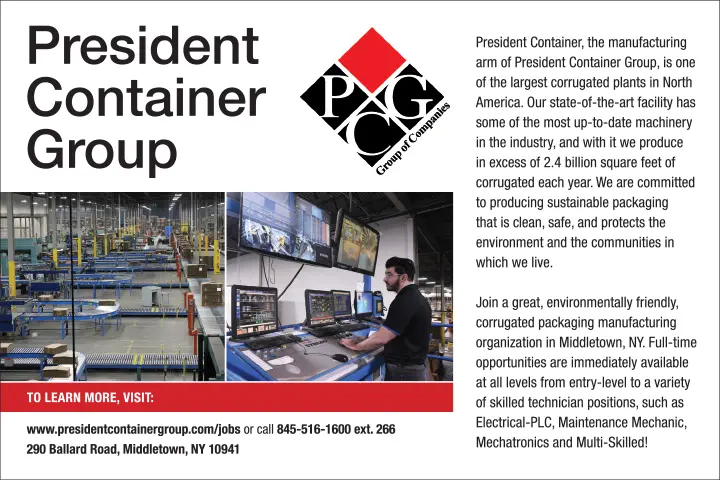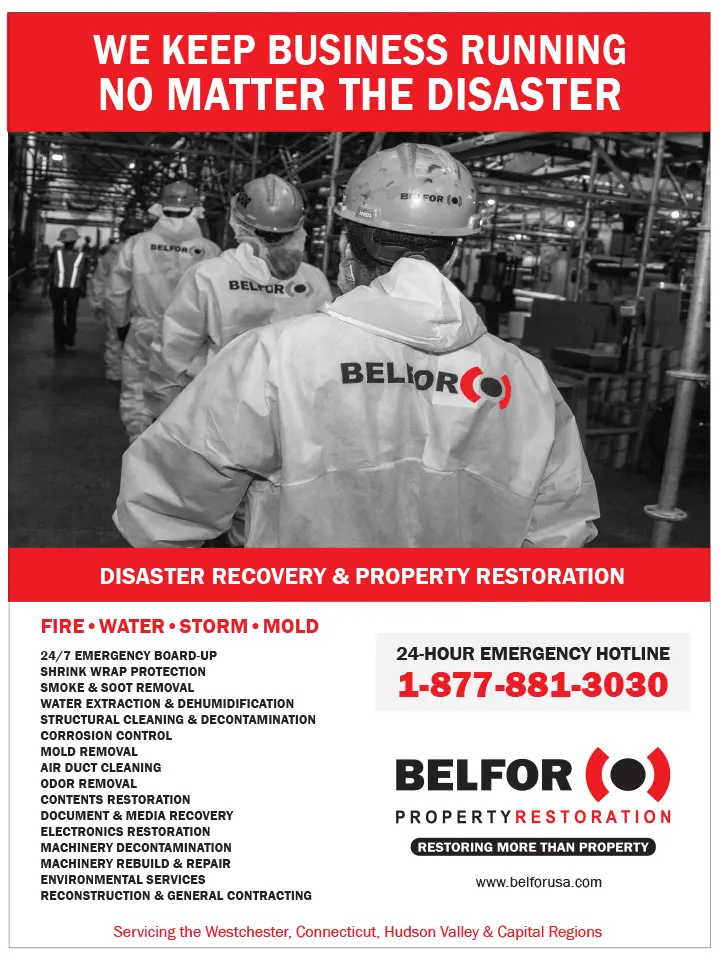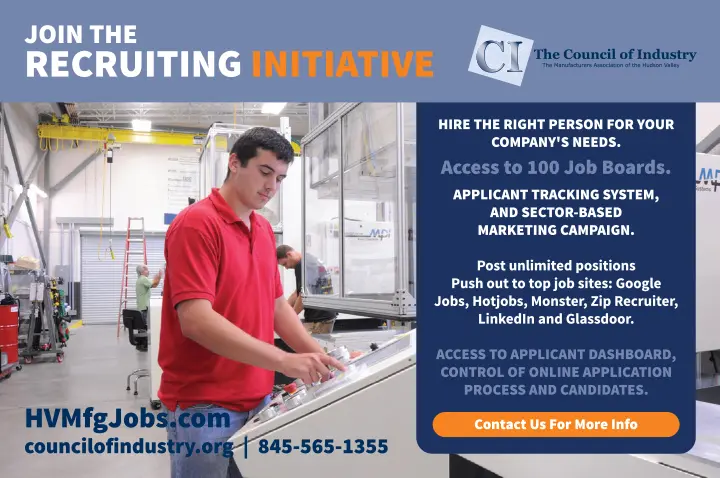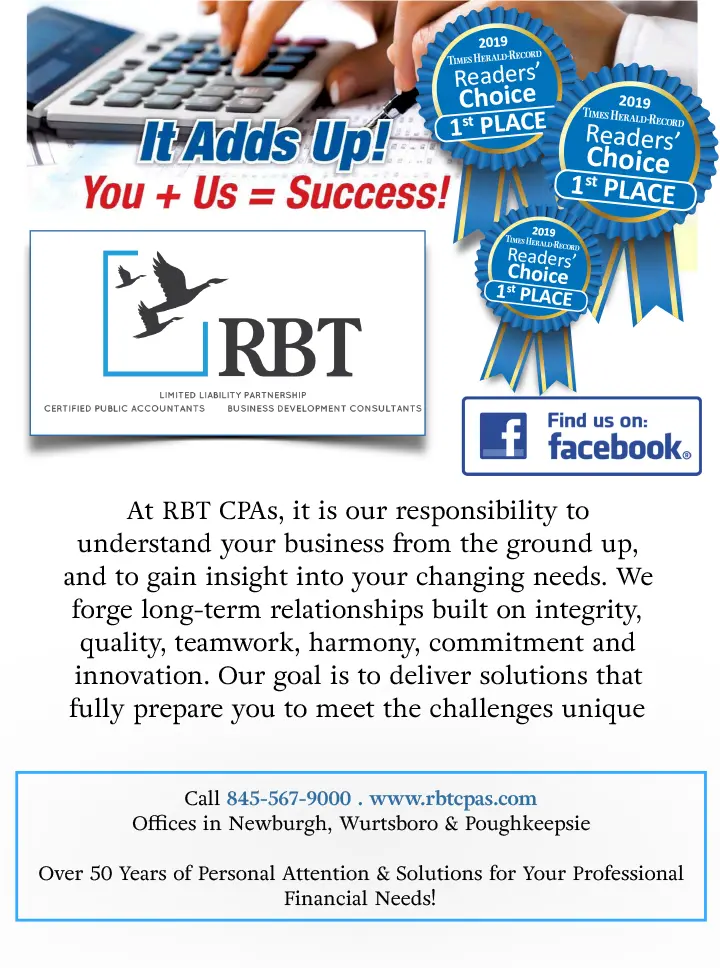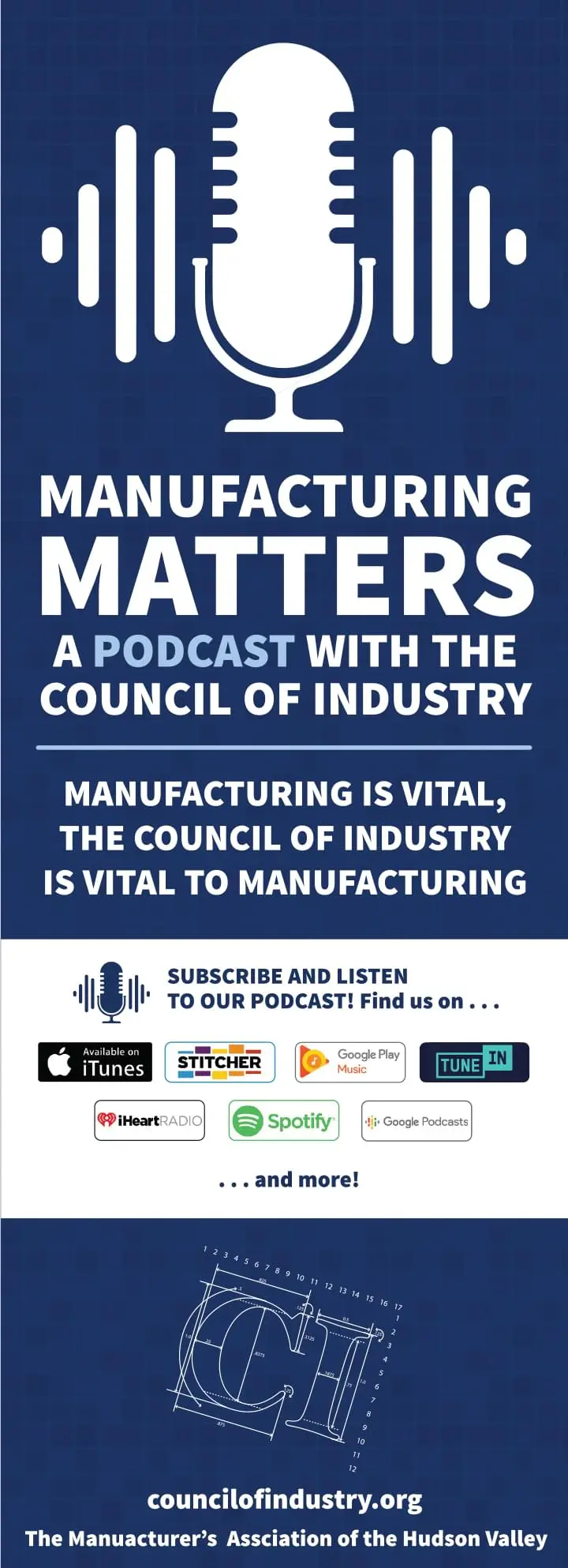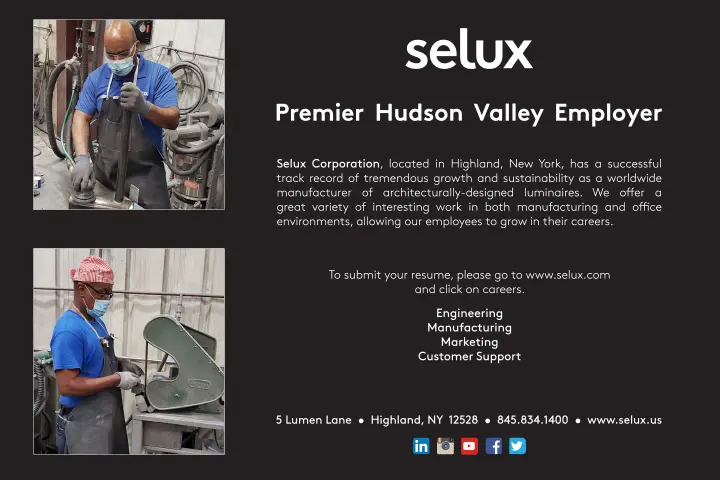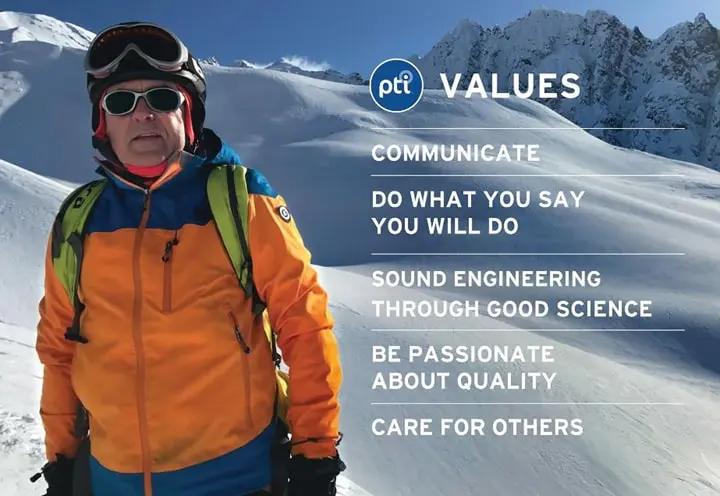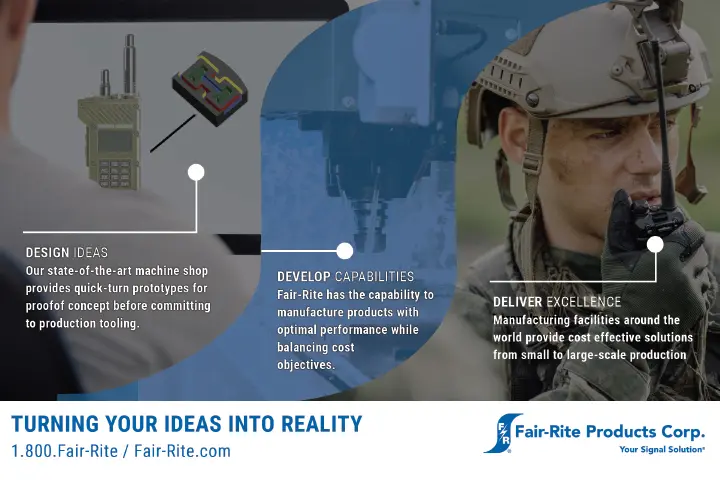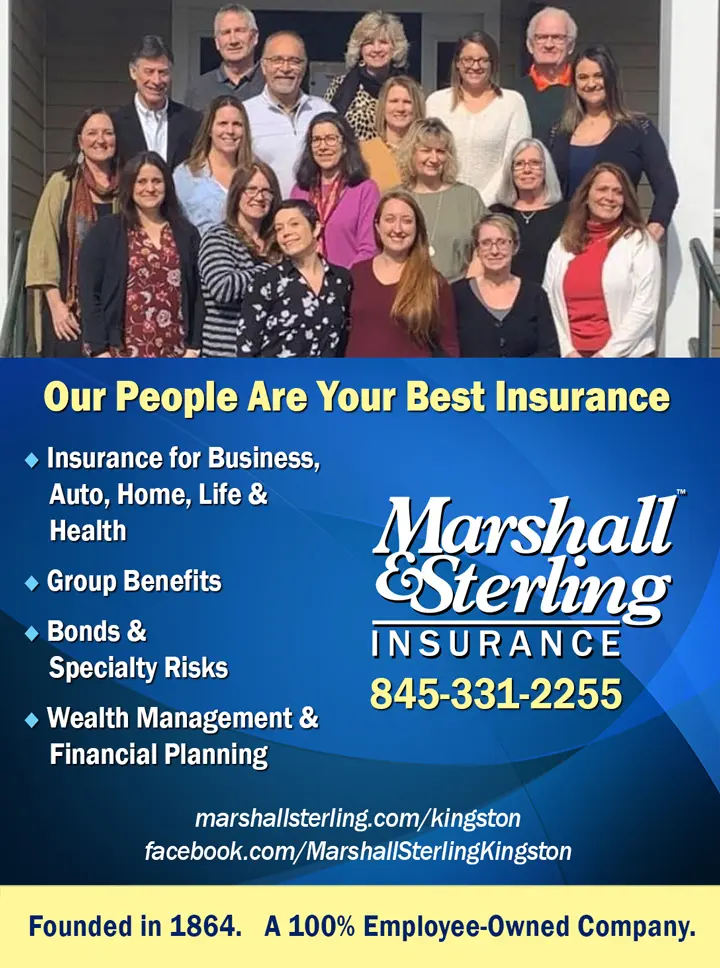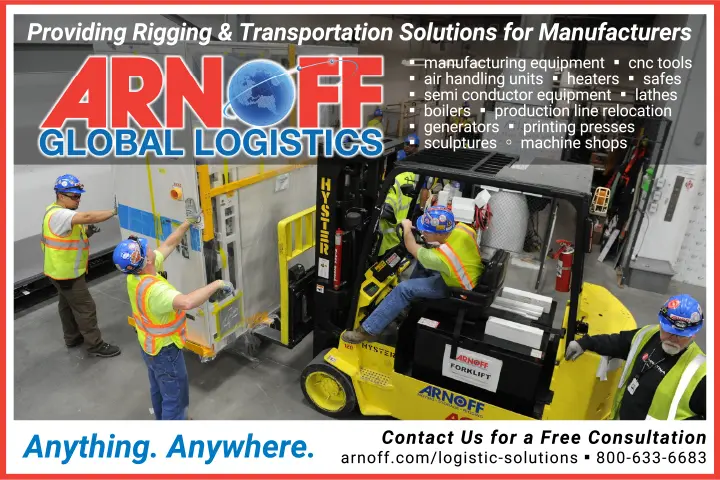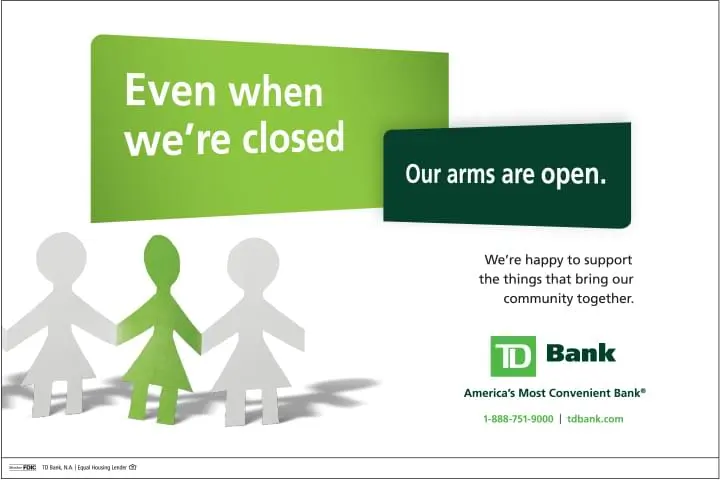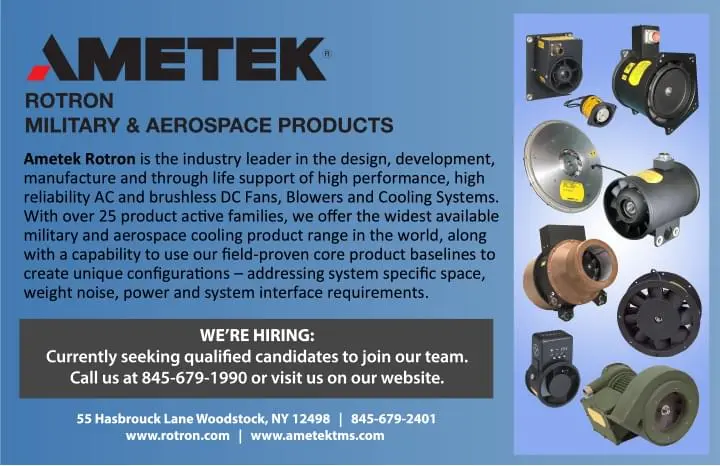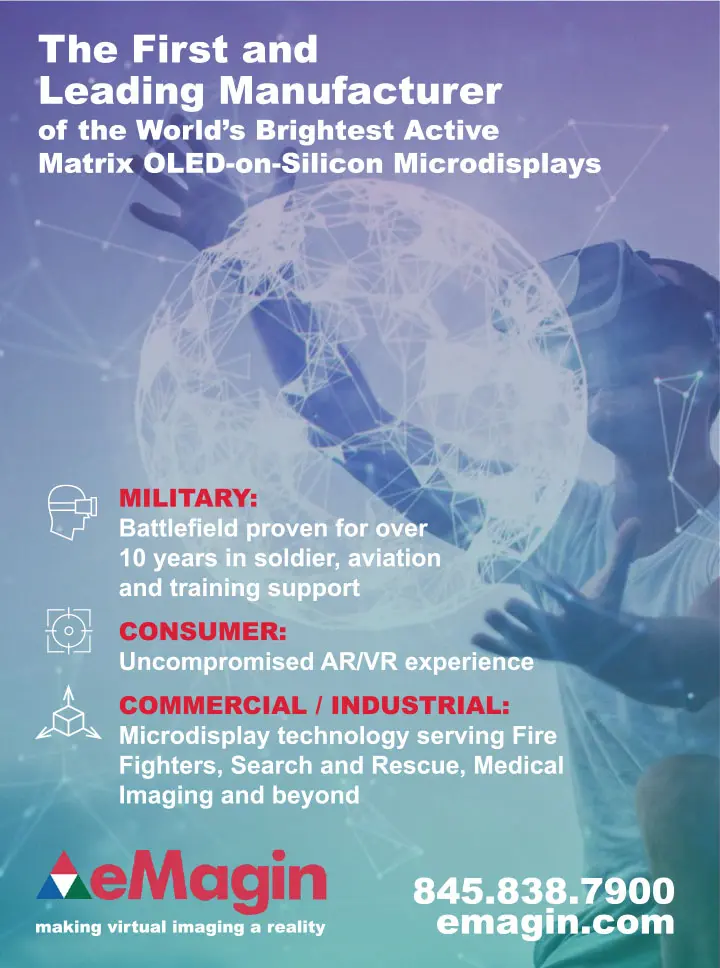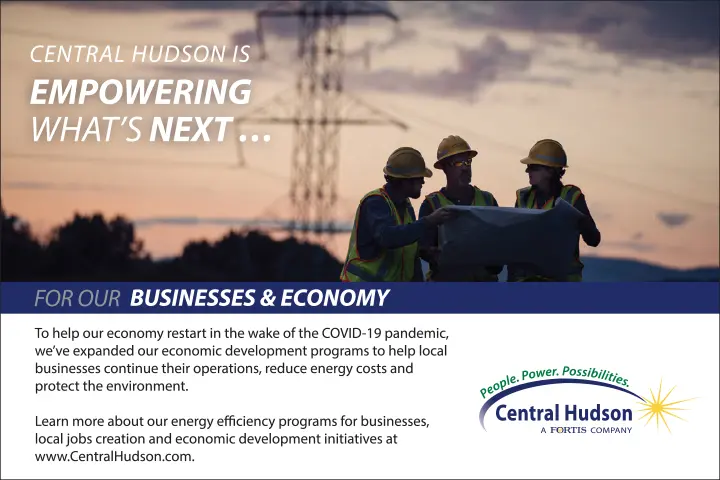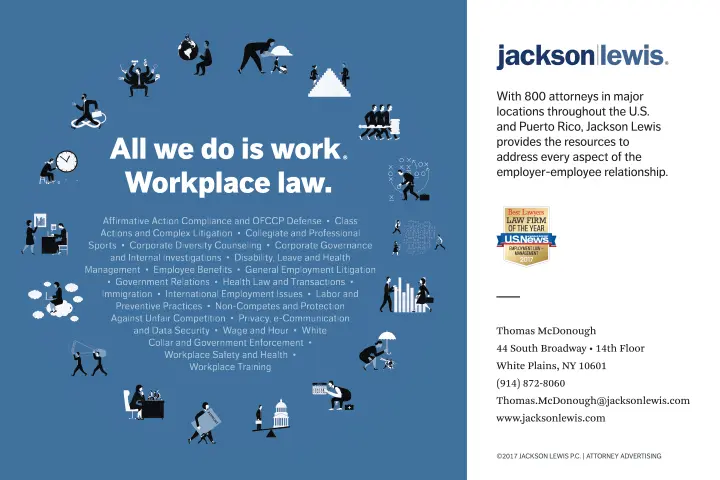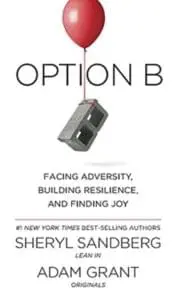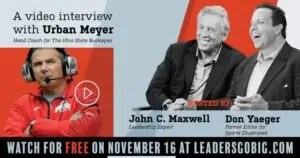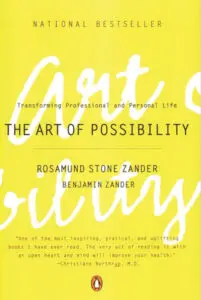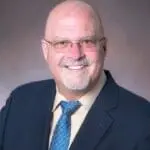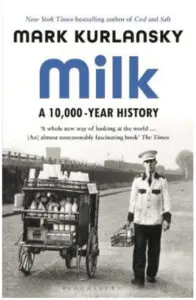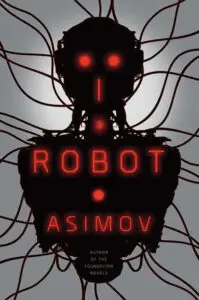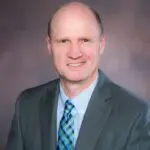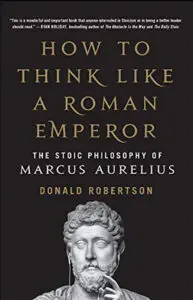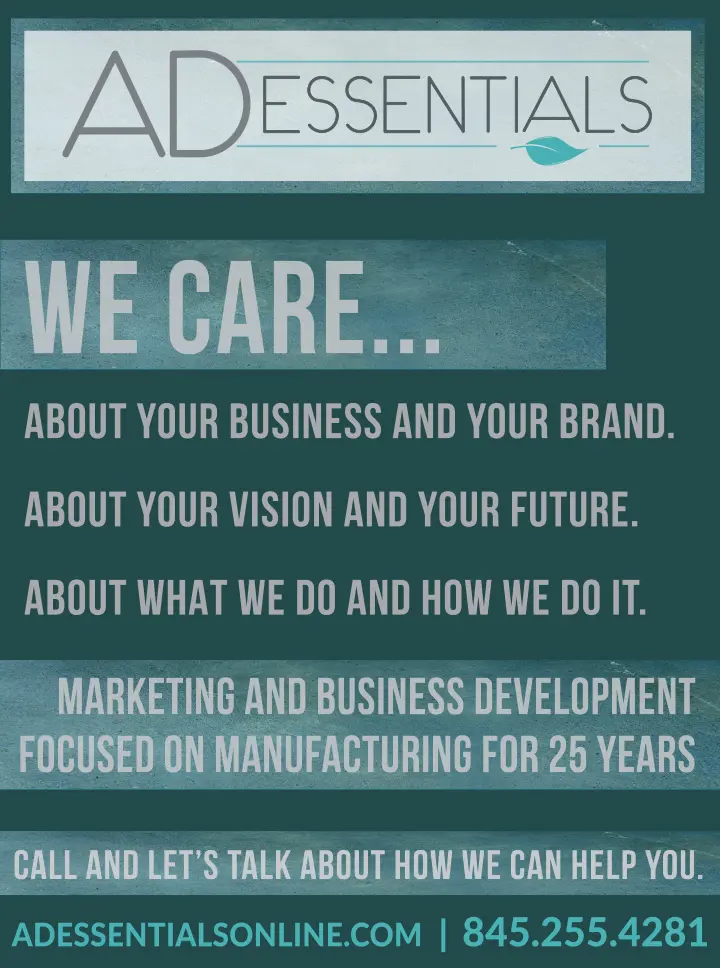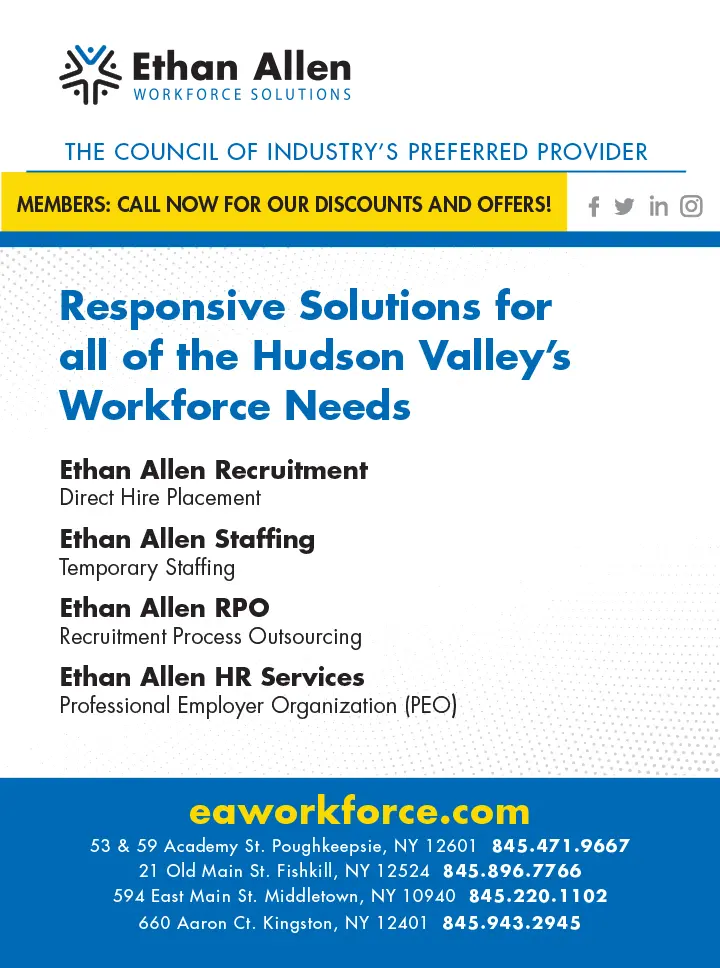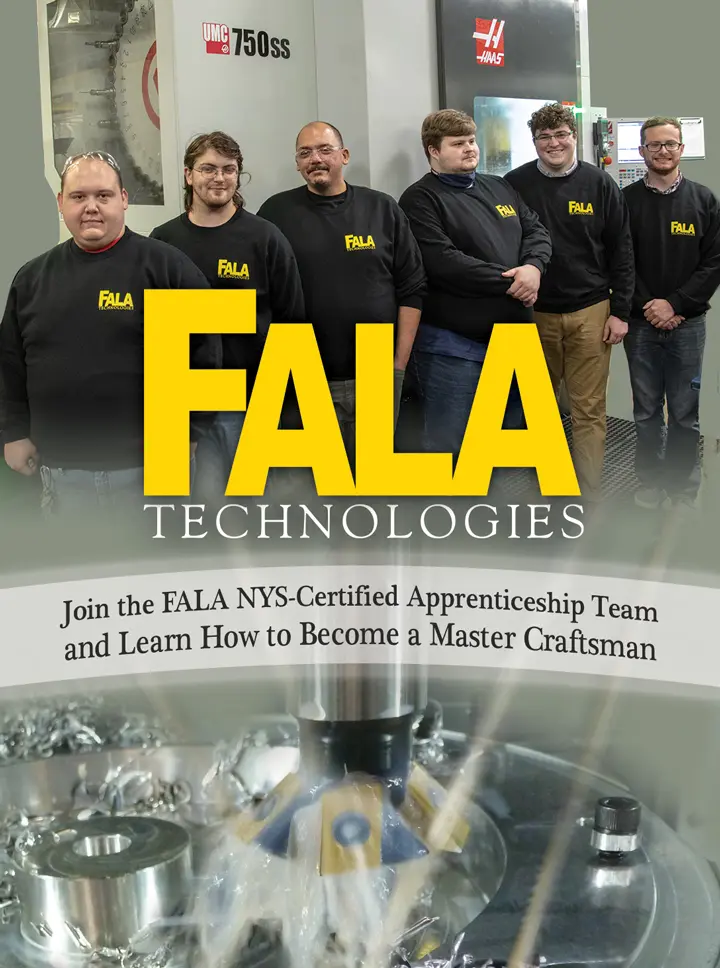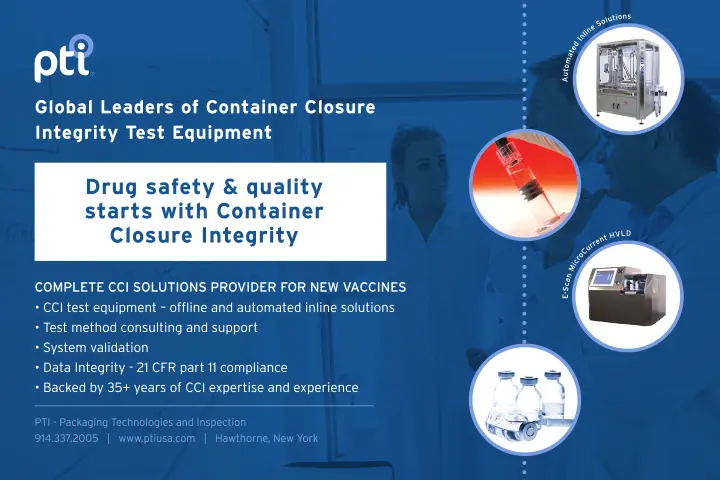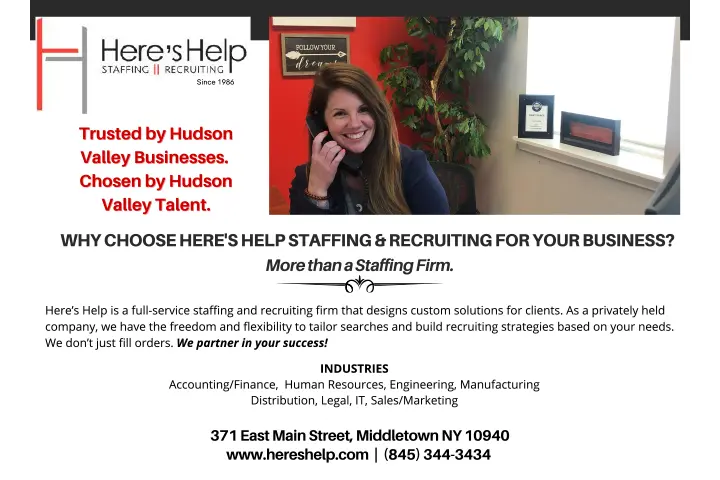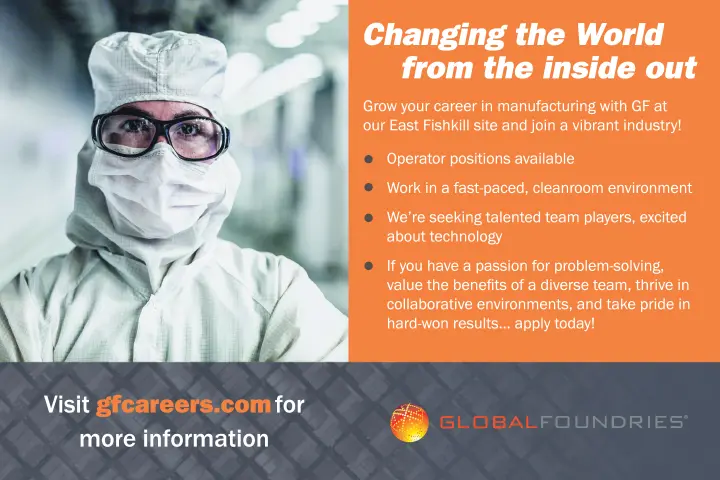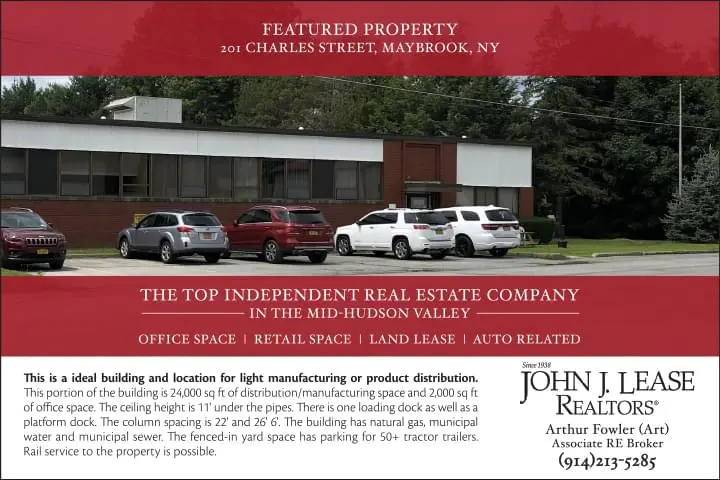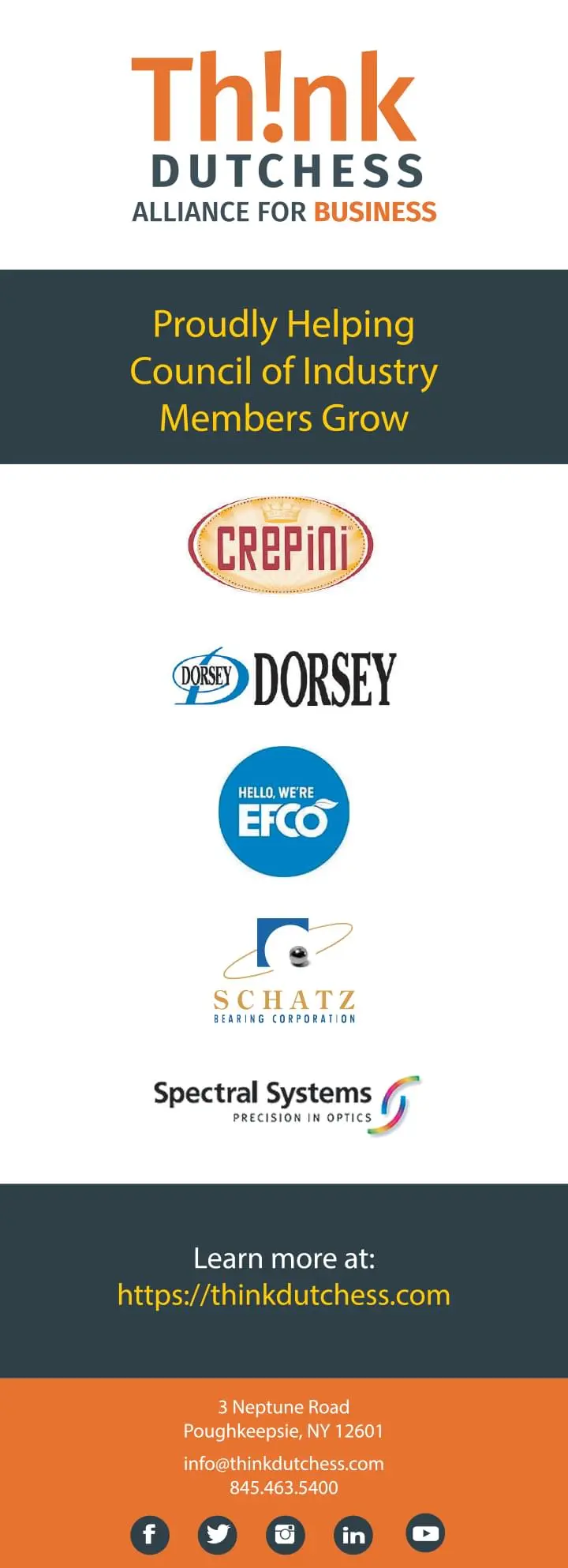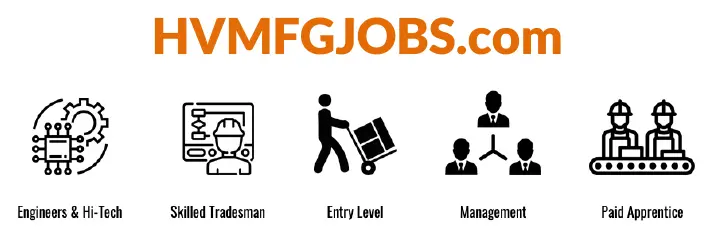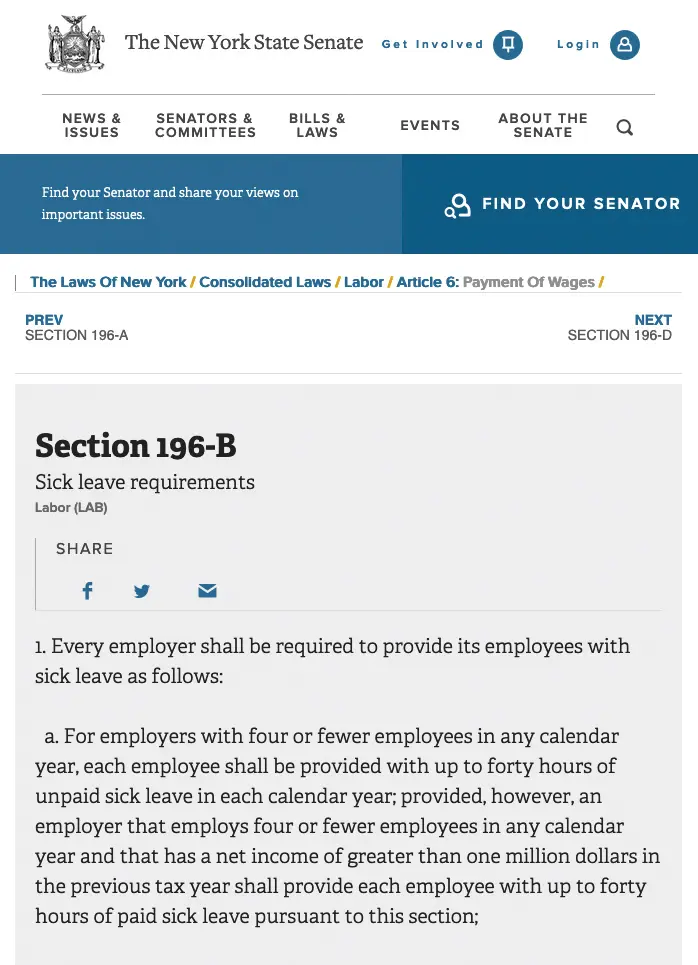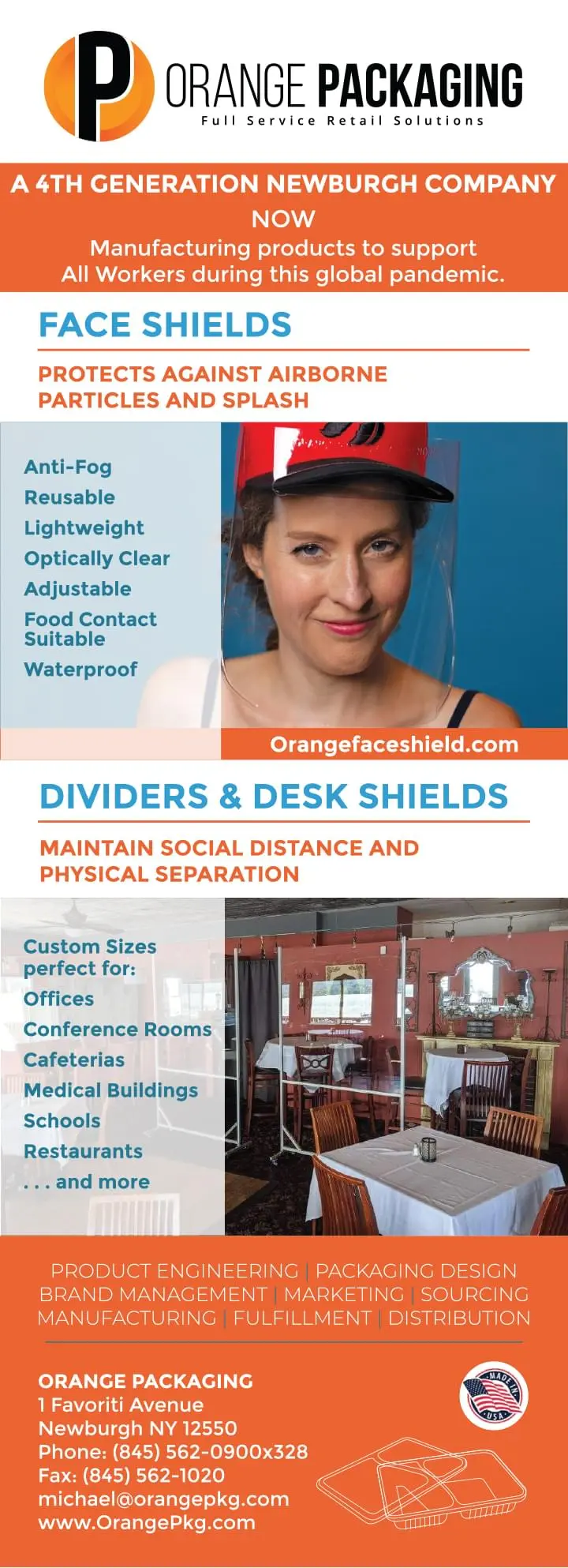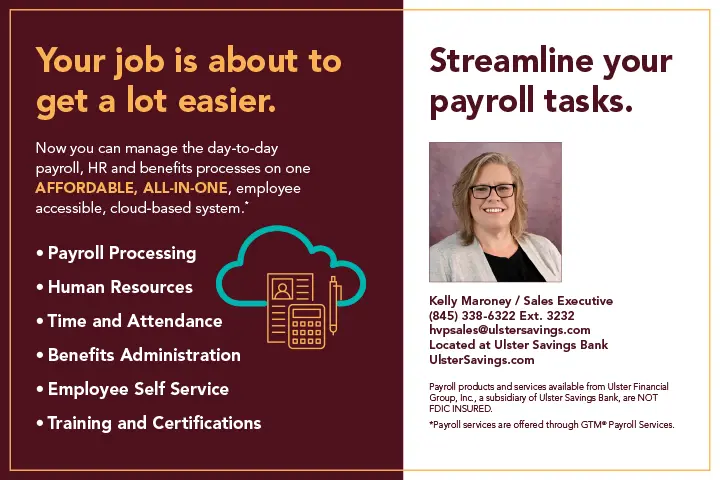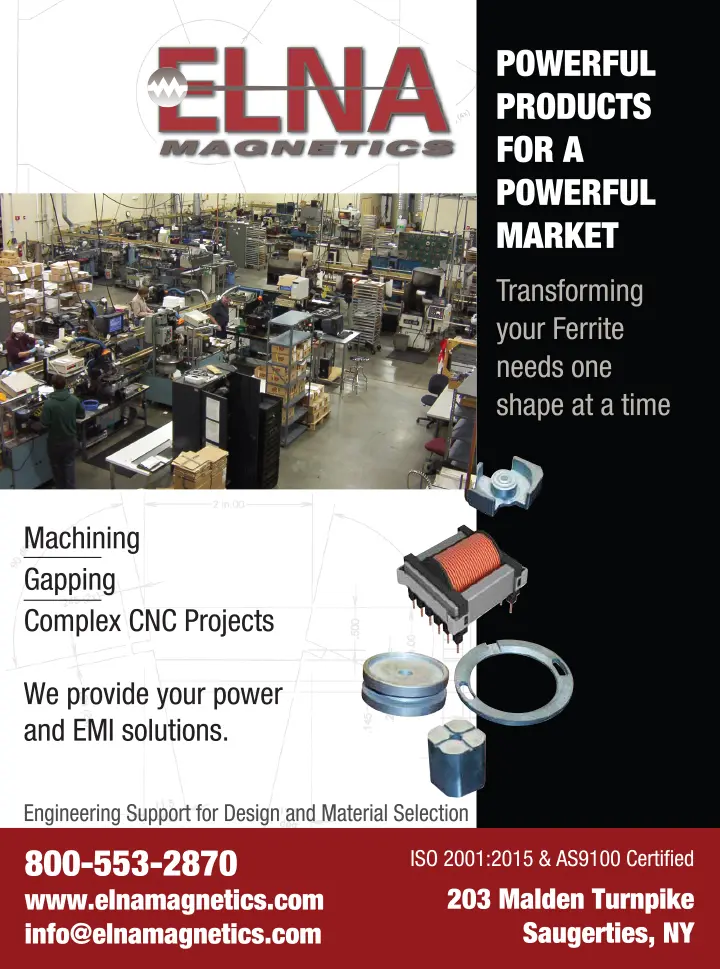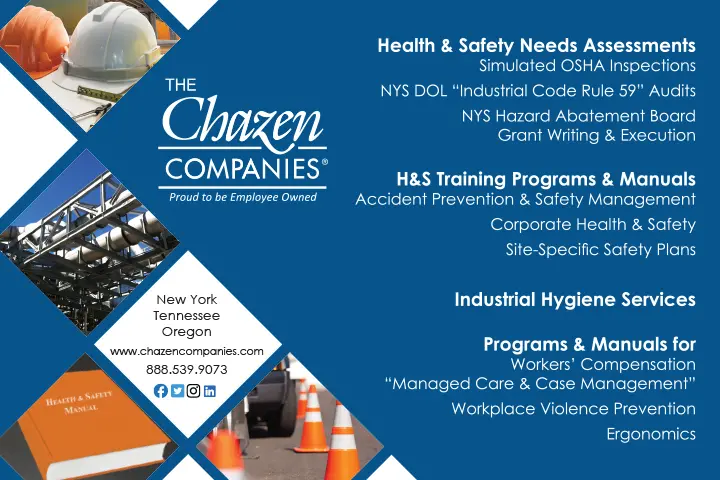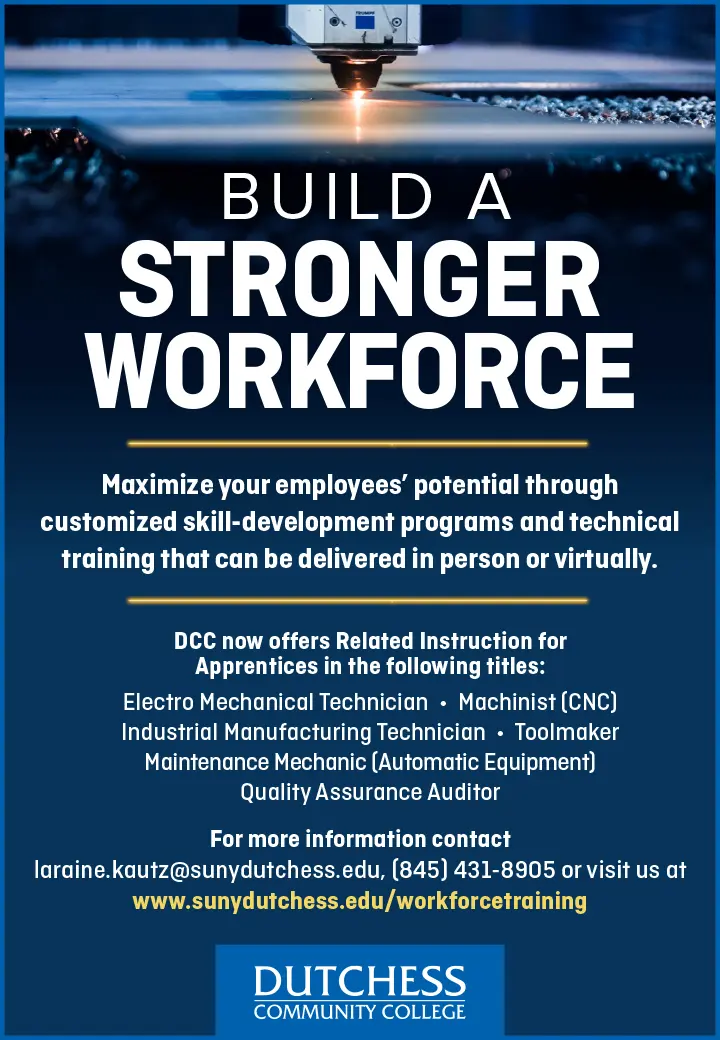Meet the people behind the products. From semi-conductors to Jet engine turbines – from apple pie filling to smoked salmon – from cosmetics to high definition micro displays – Council members make the products that make the world run. Through our podcast we introduce listeners to the people who own, work in, and support these businesses, businesses that together are the Council of Industry. We learn about their products and career paths. We learn about their leadership styles and their passion for their work. We learn about their challenges and their opportunities. In the process we learn more about manufacturing and why it is such a vital sector of our economy- vital to our region’s prosperity, our security and our future.
Issue: 2020 Fall
The Opportunity Ecosystem
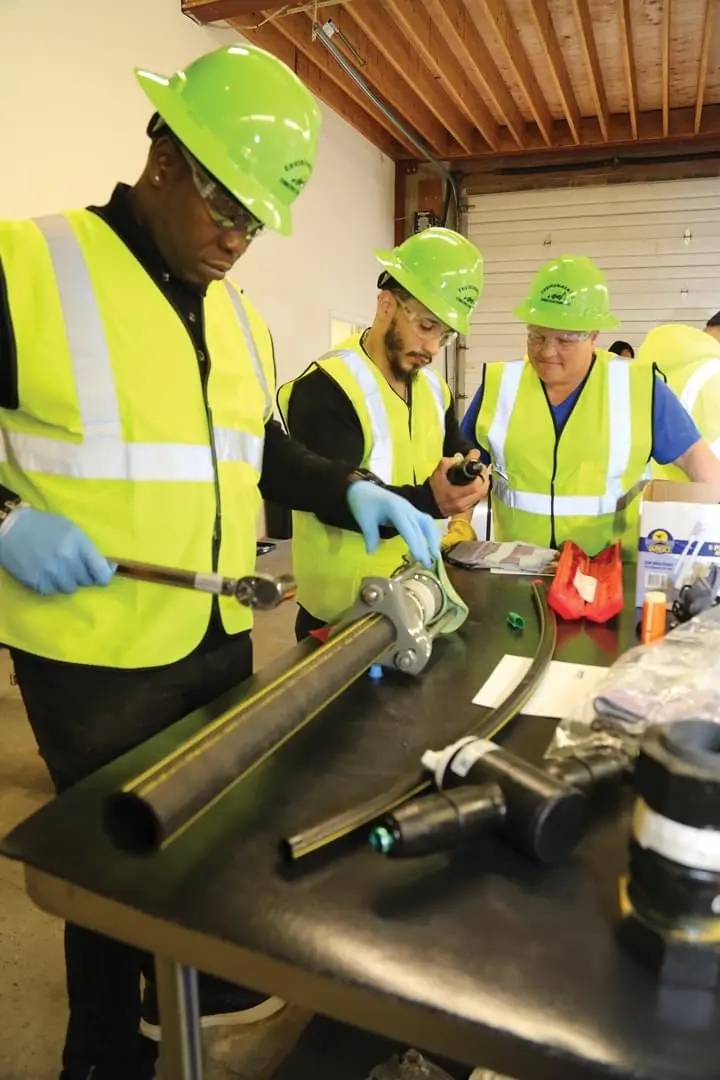
EDUCATION AND WORKPLACE
FUTURE OPPORTUNITIES | Dr. Michael A. Baston, President
When Elisabeth Kübler-Ross, in her 1969 book, On Death and Dying, proposed the five stages of grief and loss, she could not have foreseen the myriad challenges 2020 would present our region, our nation, and our world.
Although those who are grieving do not necessarily go through the stages in the same order or experience all of them, in many ways, and for a multitude of reasons, we all have been impacted by the confluence of COVID-19, its resultant economic upheaval, and structural racial issues which have created a “perfect storm.” Some are in the stages of denial and isolation or anger. Others are in the bargaining or depression stages. I would argue, however, that we must move to the acceptance stage.
We must accept the death of outdated thinking that has, for far too long, hindered the limitless growth potential of all people, particularly given the historical realities of bigotry, prejudice, discrimination, and inequity in all forms, both institutional and individual. We must accept the death of the misconception that college should be limited to the privileged few or that the community college is in some way “inferior.” We must accept the death of the notion that colleges should sanction directionless wandering instead of placing greater emphasis on career development and exploration, values formation, citizenship, and a respect for the dignity of work – foci that have been considered by some in academia of lesser value than allowing students to use college to “find themselves.”
Regional survival of the effects of the perfect storm, while an ideal goal, is an anemic aim. Working together, partners in government, educational institutions, business, industry, and community-based organizations, leaders can address inequities, promote educational opportunities, and ensure economic recovery – even in a pandemic, if we reimagine the opportunity ecosystem in the Hudson Valleys of our nation. A commitment to inclusive excellence, educational access, programmatic diversity, and the alignment of work and learning is required.
COMMITMENT #1 – INCLUSIVE EXCELLENCE
Hard realities exist. Structural racism, based on historical policies and practices and its subsequent inequitable outcomes in economic wealth, health, education, and life expectancy, has not yet been fully dismantled. Implicit bias—the unchallenged narratives and assumptions about historically marginalized people—is insidious and is still today often unrecognized by well-meaning people. We, however, do not have to accept that these realities cannot be addressed. We must reassert our commitment toward eradicating racism and supporting social justice, and, more importantly, set forth a strategy to effect reform and achieve inclusive excellence so that the workforce of tomorrow is stronger. Our workforce needs not only to have the knowledge and skills necessary to move forward, but the equal footing that will allow everyone’s talents to rise to the top so they can become their best version of themselves.
I understand that the challenge is great, but the potential of our people is even greater. I am a community college president in the eye of the storm, but we have not shrunk from the enormity of the moment because of the size of the task. Community colleges have always reflected the American promise of education – equal access and equal opportunity – to offer a beacon of hope to those who strive to improve their lives. Our current global crisis has strengthened our collective resolve and refocused our mission to keep that beacon shining brightly, leading us all safely into a better, more equitable world. But, as they say, talk is cheap—we must commit to taking steps beyond statements to achieve any lasting change. Here is how we can do that from the community college perspective, which can be replicated by others in our opportunity ecosystem, including business and industry.
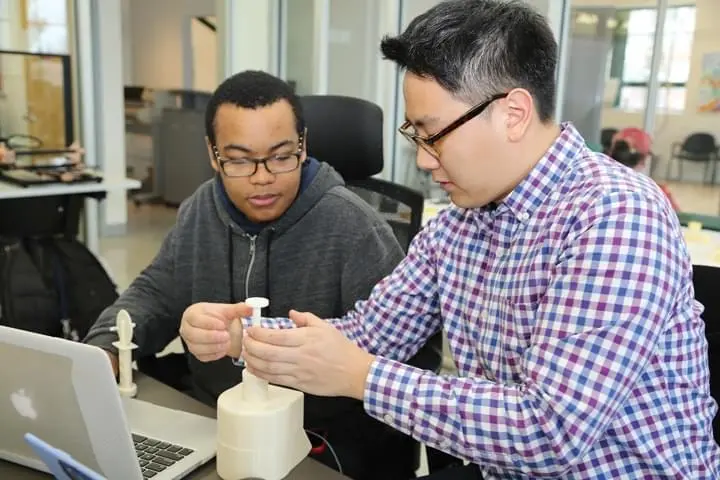
We began developing an actionable plan at RCC last June. We established The Steps Beyond Statements Working Group to review the legacy of diversity efforts led by the College’s former Diversity Committee to build on their outcomes to reflect current realities. The group has been charged with developing a new college-wide plan with specific outcomes that are measurable, using key performance indicators to be reported in an equity scorecard, including:
- Conducting an institutional self-assessment on equity practices.
- Developing equity practice expectations in the non-academic spaces of the college.
- Identifying campus-based and external experts with experience in helping faculty and staff better understand diversity, equity, and inclusion space issues.
- Creating a comprehensive process for monitoring, reviewing, and updating the equity scorecards and related activities.
Whatever the field of endeavor, statements in opposition to structural racism, hatred, and bigotry must be followed by steps that evidence the true nature of our commitment. What we do speaks much louder than what we say. Inclusive excellence must be a priority of all the members of Hudson Valley’s opportunity ecosystem.
COMMITMENT #2 – EDUCATIONAL ACCESS AND PROGRAMMATIC DIVERSITY
Another hard reality is that community colleges have gotten a bad rap, mostly from those who have never been to one.
Community Colleges are not “safety school” options. Rather, community colleges are a strategic choice for families, particularly given COVID-19 and the nation’s current economic uncertainty.
Our campus is open to everyone. Many RCC grads have gone on to graduate from Yale, Brown, and other prestigious institutions.
Indeed, nearly half of all bachelor’s degree earners in the United States have attended community colleges at one time or another, and the pandemic is proving just how valuable our institutions are to the entire educational ecosystem. Community colleges not only provide a quality, affordable education close to home, but we also play an essential role for individuals looking to retool and retrain for new careers as the workforce landscape changes in this time of uncertainty and as we navigate a culture change as a nation. Our programmatic diversity, given our cost, is unparalleled.
While students need to be ready for college, we understand it is just as important for colleges to be “student-ready” — meeting students where they are and offering career options that match their needs and desires to the jobs that are and will be available.
RCC is at the forefront of developing skill-specific programs. In addition to two-year degrees in business, education, and nursing programs, RCC’s Career Skills Academy was established last year to offer skill-specific programs to fill “middle-skills” jobs—those who require more education and training than a high school diploma but less than a four-year college degree and which pay a familysupporting wage. Our Career Skills Academy provides work-ready programs for students of any age to gain the necessary skills for a new job or enhance an existing career. The programs are designed to teach specific skills in a concentrated time frame so students can start a new career, earning a good salary in just a few weeks or months. Classes in IT support, computer-assisted design, social media branding and marketing, professional bookkeeping, medical call center customer service, gas pipeline operations, and more are available.
COMMITMENT #3 – WORK AND LEARNING ALIGNMENT
A final hard reality, we can no longer allow a disconnect between education and career trajectory to exist if the nation is to retain its competitiveness globally. The future of work and learning are intertwined, and we remain steadfast in our goal of building bridges to mobility, opportunity, and success. Career pathways matter, particularly now as critical industries like advanced manufacturing, have emerging opportunities that will require an educated and skilled workforce.
RCC’S partnership with T-SEC, The Strategic Economic Consortium, has made a significant difference. The partnership helped to develop, inform, and support Career Skills Academy offerings, particularly for the Advanced Manufacturing sector, the Assistive Technology, and Healthcare sector, and the Auto industry sector. RCC has a T-SEC funded 3D print lab at our Haverstraw extension campus, making access to and training on the technology available to educators, students, and the regional manufacturing and business communities.
Currently, the print lab works in partnership with Helen Hayes Hospital’s Physical Therapy division to prototype several different assistive technology devices, such as a utilitarian joystick.
To reimagine the opportunity ecosystem a commitment to inclusive excellence, educational access, programmatic diversity, and the alignment of work and learning is required.
The RCC Hospitality and Culinary Arts Center was established in response to the burgeoning growth in restaurants and tourism in the Hudson Valley and the resulting need for more qualified workers. It offers fasttrack culinary arts certificate programs. Housed in the same location as Hudson Market on Main, a collaborative effort between Flik International and RCC, students contribute to the daily menu offerings of the Market and prepare packaged and canned items to understand marketing and selling in a retail environment. The Center will also offer students an opportunity to operate their own pop-up restaurant when the window for that opportunity is once again safe, providing them with real-world experience that will launch them into careers in the culinary arts at all levels. When colleges, businesses, and industry partner, the community wins. The economic vitality of a community is inextricably tied to multiple stakeholders working together to ensure that opportunity exists for all.
CONCLUDING THOUGHTS
As we navigate this perfect storm and move through today’s choppy waters with its hard realities, we must have high hopes. For our part, RCC moves forward with the steadfast goal of supporting students today to make a better life for themselves and their families tomorrow. We do so with the knowledge that we can set the standard for providing quality career options for learners of all levels and all ages. We do so with pride, knowing we are shattering the misperceptions about community colleges. We move forward into the dawning of a new era, one that can and will offer inclusive and equitable options for all.
Dr. Michael A. Baston, President, Rockland Community College.
Named as one of the country’s most Notable Education Leaders of 2017 by Diverse: Issues in Higher Education. Author of The Handbook for Student Affairs in Community Colleges.
Resource Guide Fall 2020
FEDERAL ELECTED OFFICIALS
PRESIDENT
DONALD J. TRUMP (R)
Capitol address:
1600 Pennsylvania Avenue
Washington, D.C. 20500
Phone: (202) 456-1414
www.whitehouse.gov
U.S. SENATE
CHARLES SCHUMER (D)
Capitol address:
322 Hart Senate Office Bldg.
Washington, D.C. 20510
Phone: (202) 224-6542
District address:
One Park Place, Suite 100
Peekskill, NY 10566
Phone: (914) 734-1532
www.schumer.senate.gov
KIRSTEN GILLIBRAND (D)
Capitol address:
478 Russell Senate Office Bldg.
Washington, D.C. 20510
Phone: (202) 224-4451
District address:
P.O. Box 749, Yonkers, NY 10710
Phone: (845) 875-4585
www.gillibrand.senate.gov
U.S. HOUSE OF REPRESENTATIVES
NITA M. LOWEY (D) (17)
Capitol address:
2365 Rayburn HOB
Washington, D.C. 20515
Phone: (202) 225-6506
District address:
222 Mamaroneck Avenue, Suite 312
White Plains, NY 10605
Phone: (914) 428-1707
Rockland: (845) 639-3485
www.lowey.house.gov
SEAN PATRICK MALONEY (D) (18)
Capitol address:
2331 Rayburn HOB
Washington, D.C. 20515
Phone: (202) 225-5441
District address:
123 Grand Street, 2nd Fl.
Newburgh, NY 12550
Phone: (845) 561-1259
www.seanmaloney.house.gov
ANTONIO DELGADO (R) (19)
Capitol address:
1007 Longworth HOB
Washington, D.C. 20515
Phone: (202) 225-5614
District address:
256 Clinton Ave
Kingston, NY 12401
Phone: (845) 443-2930
https://delgado.house.gov
STATE ELECTED OFFICIALS
LOB indicates: Legislative Office Building
188 State Street, Albany, NY 12247
GOVERNOR
ANDREW M. CUOMO (D)
State Capitol Building
Albany, NY 12224
Phone: (518) 474-8390
www.governor.ny.gov
COMPTROLLER
THOMAS P. DINAPOLI (D)
Albany Office
110 State Street, Albany, NY 12236
Phone: (518) 474-4044
contactus@osc.state.ny.us
STATE SENATE
SHELLEY B. MAYER (D, WF) (37)
District address:
222 Grace Church Street, Suite 300
Port Chester, NY 10573
Phone: (914) 934-5250
Capitol address:
LOB: Room 509
Phone: (518) 455-2031
www.nysenate.gov/senators/shelley-b-mayer
smayer@nysenate.gov
DAVID CARLUCCI (D) (38)
District address:
20 South Main Street
New City, NY 10956
Phone: (845) 708-7701
Capitol address:
LOB: Room 514
Phone: (518) 455-2991
www.nysenate.gov/senators/david-carlucci
carlucci@nysenate.gov
JAMES SKOUFIS (D) (39)
District address:
47 Grand Street
Newburgh, NY 12550
Phone: (845) 567-1270
Fax: (845) 567-1276
Capitol address:
LOB: Room 815
Phone: (518) 455-3290
www.nysenate.gov/senators/james-skoufis
skoufis@nysenate.gov
PETER HARCKHAM (D, WF) (40)
District address:
1 Park Place, Suite 302
Peekskill, NY 10566
Phone: (914) 241-4600
Capitol address:
LOB: Room 812
Phone: (518) 455-2340
www.nysenate.gov/senators/pete-harckham
harckham@nysenate.gov
SUE SERINO (R) (41)
District address:
4254 Albany Post Road
Hyde Park, NY 12534
Phone: (845) 229-0106
Capitol address:
LOB: Room 613
Phone: (518) 455-2945
www.nysenate.gov/senators/sue-serino
Serino@nysenate.gov
JEN METZGER (D, WF) (42)
District address:
201 Dolson Avenue, Suite F
Middletown, NY 10940-6576
Phone: (845) 344-3311
Capitol address:
LOB: Room 817
Phone: (518) 455-2400
www.nysenate.gov/senators/jen-metzger
metzger@nysenate.gov
DAPHNE JORDAN (R) (43)
District address:
1580 Columbia Turnpike
Building 2, Suite 1
Castle-On-The-Hudson, NY 12033
Phone: (518) 371-2751
Capitol address:
LOB: Room 508
Phone: (518) 455-2381
www.nysenate.gov/senators/daphne-jordan
jordan@nysenate.gov
GEORGE AMEDORE (R) (46)
District address:
3770 Carman Rd, Store 3
Schenectady, NY 12303
Phone: (518) 913-7001
Capitol address:
LOB: Room 408
Phone: (518) 455-2350
www.nysenate.gov/senators/georgeamedore-jr/contact
JAMES L. SEWARD (R) (51)
District address:
41 South Main Street
Oneonta,NY 13820-2516
Phone: (607) 432-5524
Capitol address:
LOB: Room 414
Phone: (518) 455-3131
www.nysenate.gov/senator/james-l-seward
seward@nysenate.gov
STATE ASSEMBLY
DAVID BUCHWALD (D) (93)
District address:
100 S.Bedford Road, Suite 150
Mount Kisco, NY 10549
Phone: (914) 244-4450
Capitol address:
LOB: Room 331
Phone: (518) 455-5397
www.assembly.state.ny.us/mem/David-Buchwald
BuchwaldD@assembly.state.ny.us
KEVIN M. BRYNE (R) (94)
District address:
3 Starr Ridge Road, Suite 204
Brewster, NY 10509
Phone: (845) 278-2923
Capitol address:
LOB: Room 318
Phone: (518) 455-5783
www.nyassembly.gov/mem/Kevin-M-Byrne
Kevin-Byrne@assembly.state.ny.us
SANDRA GALEF (D) (95)
District address:
2 Church Street
Ossining, NY 10562
Phone: (914) 941-1111
Capitol address:
LOB: Room 641
Phone: (518) 455-5348
www.assembly.state.ny.us/mem/Sandy-Galef
GalefS@assembly.state.ny.us
KENNETH ZEBROWSKI (D) (96)
District address:
67 North Main Street
New City, NY 10956-3700
Phone: (845) 634-9791
Capitol address:
LOB: Room 424
Phone: (518) 455-5735
www.nyassembly.gov/mem/kenneth-zebrowski/
ZebrowskiK@assembly.state.ny.us
ELLEN JAFFEE (D) (97)
District address:
One Blue Hill Plaza, Suite 1116
POB 1549, Pearl River NY 10965-3100
Phone: (845) 624-4601
Capitol address:
LOB: Room 626
Phone: (518) 455-5118
www.assembly.state.ny.us/mem/Ellen-Jaffee
JaffeeE@assembly.state.ny.us
KARL BRABENEC (R) (98)
District address:
28 North Main Street, Suite 2
Florida, NY 10921
Phone: (845) 544-7551
Capitol address:
LOB: Room 329
Phone: (518) 455-5991
www.assembly.state.ny.us/mem/Karl-Brabenec
Brabeneck@assembly.state.ny.us
COLIN SCHMITT (D) (99)
District address:
6 Depot Street, Suite 103
Washingtonville, NY 10992
Phone: (845) 469-6929
Capitol address:
LOB: Room 433
Phone: (518) 455-5441
www.nyassembly.gov/mem/Colin-Schmitt
schmittc@nyassembly.gov
AILEEN GUNTHER (D) (100)
District address:
18 Anawana Lake Road
Monticello NY 12701-3200
Phone: (845) 794-5807
Middletown City Hall, 3rd floor
16 James Street, Middletown, NY 10940
Phone: (845) 342-9304
Capitol address:
LOB: Room 826
Phone: (518) 455-5355
www.assembly.state.ny.us/mem/Aileen-M-Gunther
GuntheA@assembly.state.ny.us
BRIAN D. MILLER (R) (101)
District address:
4747 Middle Settlement Road
New Hartford, NY 13413
Phone: 315-736-3879
14 Central Ave, Suite 101
PO Box 247
Wallkill, NY 12589
Phone: (845) 895-1080
Capitol address:
LOB: Room 544
Phone: (518) 455-5334
www.nyassembly.gov/mem/Brian-D-Miller
millerb@nyassembly.gov
CHRIS TAGUE (R) (102)
District address:
45 Five Mile Woods Road, Bldg 2, Suite 2
Catskill, NY 12414
Phone: (518) 943-1371
Capitol address:
LOB: Room 937
Phone: (518) 455-5363
www.assembly.state.ny.us/mem/Chris-Tague
taguec@nyassembly.gov
KEVIN CAHILL (D) (103)
District address:
Governor Clinton Building
One Albany Avenue, Suite G-4,
Kingston NY 12401-2946
Phone: (845) 338-9610
Capitol address:
LOB: Room 716
Phone: (518) 455-4436
www.assembly.state.ny.us/mem/Kevin-A-Cahill
CahillK@assembly.state.ny.us
JONATHAN JACOBSON (104)
District address:
47 Grand Street
Newburgh, NY 12550
(845) 562-0888
Capitol address:
LOB: Room 628
Albany, NY 12248
Phone: (518) 455-5762
www.nyassembly.gov/mem/Jonathan-G-Jacobson
jacobsonj@nyassembly.gov
KIERAN LALOR JR. (R) (105)
District address:
North Hopewell Plaza, Suite #1
1075 Rt. 82, Hopewell Junction, NY
12533
Phone: (845) 221-2202
Capitol address:
LOB: Room 531
Phone: (845) 221-2202
www.assembly.state.ny.us/mem/kieran-michael-lalor
LalorK@assembly.state.ny.us
DIDI BARRETT (D) (106)
District address:
12 Raymond Avenue, Suite 105
Poughkeepsie, NY 12603
Phone: (845) 454-1703
Capitol address:
LOB: Room 841
Phone: (518) 455-5177
www.assembly.state.ny.us/mem/didi-barrett
BarrettD@assembly.state.ny.us
COUNTY EXECUTIVES
DUTCHESS COUNTY
MARCUS J. MOLINARO (R)
County Executive’s Office
22 Market Street
Poughkeepsie, NY 12601
Phone (845) 486-2000
countyexec@dutchessny.gov
ORANGE COUNTY
STEVEN M. NEUHAUS (R)
Orange County
Government Center
255 Main St.
Goshen, NY 10924
Phone: (845) 291-2700
ceoffice@orangecountygov.com
PUTNAM COUNTY
MARYELLEN ODELL (R)
Putnam County Office Building
40 Gleneida Avenue, 3rd Floor
Carmel, New York 10512
Phone: (845) 808-1001
PutnamCountyExecutive@
putnamcountyny.gov
ROCKLAND COUNTY
EDWIN J. DAY (R)
Office of County Executive
11 New Hempstead Road
New City, NY 10956
Phone: (845) 638-5122
CountyExec@co.rockland.ny.us
SULLIVAN COUNTY
MANAGER
JOSHUA POTOSEK
Sullivan County
Government Center
100 North Street, PO Box 5012
Monticello, NY 12701-5012
Phone: (845) 807-0450
ULSTER COUNTY
PATRICK RYAN (D)
244 Fair Street
Kingston, NY 12401
Phone: (845) 340-3800
exec@co.ulster.ny.us
WESTCHESTER COUNTY
GEORGE LATIMER (R)
900 Michaelian Building
148 Martine Avenue, Suite 408
White Plains, NY 10601
Phone: (914) 995-2900
ce@westchestergov.com
BUSINESS ASSOCIATIONS
NATIONAL ASSOCIATION OF MANUFACTURERS
1331 Pennsylvania Avenue
Washington, DC 20001
Phone: (202) 637-3182
www.nam.org
manufacturing@nam.org
MANUFACTURERS ALLIANCE OF NEW YORK (MANY)
5788 Widewaters Parkway
Syracuse, New York 13214
Phone: (315) 474-4201
www.macny.org
NEW YORK STATE BUSINESS COUNCIL
152 Washington Avenue, Suite 400
Albany, NY 12210
Phone: (518) 465-7511
www.bcnys.org
MANUFACTURING & TECHNOLOGY ENTERPRISE CENTER (MTEC)
180 South Street, Bldg 1, Suite 1
Highland, NY 12528
Phone: (845) 391-8214
www.mfgtec.org
UPSTATE VENTURE ASSOCIATION OF NEW YORK (UVANY)
1971 Western Avenue, Suite 1110
Pittsford, New York 14534
Phone: (518) 320-2746
www.uvc.org
ROCKLAND BUSINESS ASSOCIATION, INC.
One Blue Hill Plaza, P.O. Box 1567
Pearl River, NY 10965
Phone: (845) 735-2100
www.rocklandbusiness.org
THE BUSINESS COUNCIL OF WESTCHESTER
800 Westchester Avenue, Suite S-310
Rye Brook, NY 10573
Phone: (914) 948-2110
www.thebcw.org
DUTCHESS COUNTY REGIONAL CHAMBER OF COMMERCE
One Civic Center Plaza, Suite 400
Poughkeepsie, NY 12601
Phone: (845) 454-1700
www.dcrcoc.org
ORANGE COUNTY CHAMBER OF COMMERCE
40 Matthews Street, Suite 104
Goshen, NY 10924
Phone: (845) 457-9700
www.orangeny.com
NEW PALTZ REGIONAL CHAMBER OF COMMERCE
257 Main Street
New Paltz, NY 12561
Phone: (845) 255-0243
www.newpaltzchamber.org
ULSTER COUNTY CHAMBER OF COMMERCE
214 Fair Street
Kingston, NY 12401
Phone: (845) 338-5100
www.ulsterchamber.org
EDUCATION & TRAINING
BEACON INSTITUTE CLARKSON UNIVERSITY
199 Dennings Avenue
Beacon, NY 12508
Phone: (845) 838-1600
www.bire.org
MARIST COLLEGE
3399 North Road
Poughkeepsie, NY 12601
Phone: (845) 575-3000
www.marist.edu
MOUNT ST. MARY COLLEGE
330 Powell Avenue
Newburgh, NY 12550
Phone: (845) 561-0800
www.msmc.edu
SUNY NEW PALTZ
1 Hawk Drive
New Paltz, NY 12561
Phone: (845) 257-7869
www.newpaltz.edu
DUTCHESS COUNTY COMMUNITY COLLEGE
53 Pendell Road
Poughkeepsie, NY 12601
Phone: (845) 431-8000
www.sunydutchess.edu
ORANGE COUNTY COMMUNITY COLLEGE
115 South Street
Middletown, NY 10940
Phone: (845) 344-6222
www.sunyorange.edu
ROCKLAND COMMUNITY COLLEGE
145 College Road
Suffern, NY 10901
Phone: (845) 574-4000
www.sunyrockland.edu
SUNY SULLIVAN
112 College Road
Loch Sheldrake, NY 12759
Phone: (845) 434-5750
www.sunysullivan.edu
SUNY ULSTER
491 Cottekill Road
Stone Ridge, NY 12484
Phone: (845) 687-5000
www.sunyulster.edu
WESTCHESTER COMMUNITY COLLEGE
75 Grasslands Road
Valhalla, NY 10595
Phone: (914) 606-6600
www.sunywcc.edu/pdc
DUTCHESS COUNTY BOCES
5 Boces Road
Poughkeepsie, NY 12601
Phone: (845) 486-4800
www.dcboces.org
ORANGE/ULSTER BOCES
53 Gibson Road
Goshen, NY 10924
Phone: (845) 291-0100
www.ouboces.org
PUTNAM/ NORTHERN WESTCHESTER BOCES
200 Boces Drive
Yorktown Heights, NY 10598-4399
Phone: (914) 245-2700
www.pnwboces.org
ROCKLAND BOCES
65 Parrott Road
West Nyack, NY 10994
Phone: (845) 627-4700
www.rocklandboces.org
ULSTER BOCES
Rt. 9W, PO Box 601
Port Ewen, NY 12466
Phone: (845) 331-5050
www.ulsterboces.org
SOUTHERN WESTCHESTER BOCES
17 Berkley Drive
Rye Brook, NY 10573
Phone: (914) 937-3820
www.swboces.org
ECONOMIC DEVELOPMENT
NEW YORK STATE ECONOMIC DEVELOPMENT COUNCIL
111 Washington Avenue, 6th Floor
Albany, NY 12210
Phone: (518) 426-4058
www.nysedc.org
HUDSON VALLEY ECONOMIC DEVELOPMENT CORPORATION
10 Matthews St.
Goshen, NY 10924
Phone: (845) 220-2244
www.hvedc.org
TH!NK DUTCHESS ALLIANCE FOR BUSINESS
3 Neptune Road, Suite 821
Poughkeepsie, NY 12601
Phone: (845) 463-5400
www.thinkdutchess.com
THE ORANGE COUNTY PARTNERSHIP
40 Matthew Street, Suite 108
Goshen, NY 10924
Phone: (845) 294-2323
www.ocpartnership.org
PUTNAM COUNTY ECONOMIC DEVELOPMENT CORPORATION
40 Gleneida Avenue
Carmel, NY 10512
Phone: (845) 808-1021
www.putnamedc.org
ROCKLAND ECONOMIC DEVELOPMENT CORP.
Two Blue Hill Plaza, PO Box 1575
Pearl River, NY 10965
Phone: (845) 735-7040
www.redc.org
ULSTER COUNTY ECONOMIC DEVELOPMENT ALLIANCE
PO Box 1800
244 Fair Street
Kingston, NY 12402-1800
Phone: (845) 340-3000
www.ulstercountyny.gov
WESTCHESTER COUNTY OFFICE OF ECONOMIC DEVELOPMENT
148 Martine Avenue
White Plains, NY 10601
Phone: (914) 995-2000
www.westchestergov.com/public_html/index.php
WORKFORCE DEVELOPMENT INSTITITUTE
15 Stone Castle Road, Rock Tavern, NY 12575
Phone: (845) 567-1213
120 Saw Mill Road, Hastings, NY 10706
Phone: (914) 231-9670
wdiny.org
WORKFORCE INVESTMENT BOARDS
DUTCHESS ONE STOP CAREER CENTER
191 Main Street
Poughkeepsie, NY 12601
Phone: (845) 473-9000
www.dutchessonestop.org
ORANGE WORKS CAREER CENTER
3 Washington Center, 4th Floor
Newburgh, NY 12550
Phone: (845) 568-5090
33 Fulton Street 2nd Floor
Middletown, NY 10940
www.orangecountygov.com/352/Employment-Training
WESTCHESTER/PUTNAM CAREER CENTER NETWORK
120 Bloomingdale Rd.
White Plains, NY 10605
Phone: (914) 995-3910
www.westchesterputnamonestop.com
ULSTER WORKS
521 Boces Lane
Kingston, NY 12401
Phone: (845) 443-8066
www.ulsterworks.com
SULLIVAN COUNTY ONE STOP
100 North Street
Monticello, NY 12701
Phone: (845) 794-3340
sullivanny.us/Departments/Workforcedevelopment
FEDERAL AGENCIES
ENVIRONMENTAL PROTECTION AGENCY
290 Broadway
New York, NY 10007-1866
Phone: (212) 637-5000
www.epa.gov
U.S. DEPARTMENT OF LABOR
200 Constitution Ave NW
Washington, DC 20210
Phone: 1 (866) 487-2365
www.dol.gov
OCCUPATIONAL SAFETY & HEALTH ADMINISTRATION (OSHA)
401 New Karner Road, Suite 300
Albany, NY 12205-3809
Phone: (518) 464-4338
www.osha.gov
U.S. DEPARTMENT OF COMMERCE
707 Westchester Avenue, # 209
White Plains, NY 10601
Phone: (914) 682-6712
www.export.gov/newyork/westchester
U.S. SMALL BUSINESS ADMINSTRATION
26 Federal Plaza Suite 3108
New York, NY 10278
Phone: (212) 264-1450
www.sba.gov/offices/regional/ii
STATE AGENCIES
EMPIRE STATE DEVELOPMENT
625 Broadway
Albany, New York 12207
Phone: (518) 292-5100
www.empire.state.ny.us
Regional office:
33 Airport Center Drive, Suite 201
New Windsor, NY 12553
Phone: (845) 567-4882
www.empire.state.ny.us/MidHudson.html
ENVIRONMENTAL CONSERVATION
625 Broadway
Albany, NY 12233
Phone: : (518) 402-8044
www.dec.ny.gov
Regional office:
21 South Putt Corners Road
New Paltz, NY 12561
Phone: (845) 256-3000
Fax: (845) 255-0714
www.dec.ny.gov/about/558.html#region3
LABOR
Building 12 W.A. Harriman Campus
Albany, NY 12240
Phone: (518) 457-9000
www.labor.ny.gov
TRANSPORTATION
50 Wolf Road
Albany, NY 12232
Phone: (518) 457-6195
Regional office:
4 Burnett Blvd.
Poughkeepsie, NY 12603
Phone: (845) 431-5700
www.dot.ny.gov/regional-offices/region8/contacts
TECHNICAL SOCIETIES
ACM Association for Computing Machinery
pok.acm.org
APICSTZ APICS Tappan Zee
www.apicstz.org
ASQ ASQ Mid-Hudson Section 302
www.asqmidhudson.org
ASSE American Society of Safety Engineers
Hudson River Valley Chapter
hudsonrivervalley.asse.org
HVOPEN HV Open (previously MHVLUG)
Open Technologies
hvopen.org
HVP Hudson Valley Programmers
www.meetup.com/hvprogrammers/
IEEE Mid-Hudson Section of the IEEE
webinabox.vtools.ieee.org/wibp_home/index/R10019
MHCUG Mid-Hudson Computer User Group, Inc.
www.mhcug.org
MHHRA Mid-Hudson Human Resource Association
www.midhudsonhr.org
MHVSHRM Mid-Hudson Valley Society for Human Resource Management
www.mhvshrm.org
PMA Precision Metalforming Association of NY and NJ
www.pma.org/districts/NY/
PMI Project Management Institute
www.pmihvc.org
SME Society of Manufacturing Engineers
www.sme.org
SWE Society of Women Engineers
www.swe.org
WiM Women in Manufacturing
www.womeninmanufacturing.org
The Certainty Of Uncertainty
ENTERPRISE RISK MANAGEMENT
IGNITION LIFE SOLUTIONS | BY SRI VILAYANOOR
ERM-101: A PRIMER
SETTING THE CONTEXT: UNCERTAINTY
Imagine you had a magic wand and your wish of going back to the summer of 2019 came true.
If I had told you then that we are going to be faced with a global pandemic in just a few months – something that would bring the world to a brief stand-still and when we do recover, we would live in a completely new norm – what would have been your response? “There goes another conspiracy theory” would be my guess — or something close to that! While it is debatable, whether or not the COVID-19 crisis was predictable based on intelligence available through several independent sources like the National Institute of Health (NIH). What is clear from our experience is this: as human beings in a free society, the general tendency is to underestimate the adverse impact of uncertainties from “what we don’t know we don’t know”.
UNCERTAINTY IS A FACT OF LIFE.
There literally cannot be anything that we can be 100% sure about. From betting on the outcome of a game of cards to projecting your personal/business revenues to even day-to-day tasks like being just-in-time for a meeting – there is an inbuilt level of uncertainty in literally anything we can think of. It is one of those things from which you can try to run, but never hide. But, why try to hide from uncertainty when there is a proven way to manage it? The concept of risk management has been around from time immemorial and provides an effective framework for managing uncertainty and its impact.
DEFINITION OF RISK:
The term “risk” has been the center point of discussions on several platforms for a very long time. From Einstein’s Theory of Relativity and Heisenberg’s Uncertainty Principles to stochastic modelling that drives your Google Map algorithms, the concept of risk has attracted an almost infinite range of applications. The search of a consistent definition of the term “risk” will lead us to the conclusion that there are several definitions available based on the context. The one that I personally like is the definition of risk from the International Organization for Standardization’s (ISO) Guide 73:2009. This internationally accepted Standard defines risk as the “effect of uncertainty on objectives.” Among all definitions I have come across, this fits the KISS principle – it is simple, short and demystified! It is not the actual uncertainty that is the risk – risk is the impact of the uncertainty on what you are trying to achieve! What’s interesting is that when ISO published it’s “ISO 9000:2015, Quality management systems–Fundamentals and vocabulary”, the phrase “deviation from the expected, positive or negative” was added to describe the Guide 73 definition about “effect of uncertainty”. Yes – as one can imagine, uncertainty does not always have to yield an adverse impact on our objectives; it can also contribute to the achievement of our objectives. The accelerated growth of online shopping portals like Amazon and digital business communication apps like Microsoft Teams and Zoom since the start of the COVID-19 pandemic illustrate the positive impact of uncertainty on objectives.
THE CASE FOR MANAGING RISK AT THE ENTERPRISE LEVEL:
If risk management is the business of managing the impact of an uncertainty on our objectives, the initial response we normally get goes something like this: “we do that already!” Yes – the crux of any manager or leader’s job description is to predict and proactively prevent undesirable events. While this allows for a siloed approach to managing risks in one’s individual function, it does not allow for consideration of risks outside the specific function. For instance, let’s take two managers to illustrate this common pitfall: a Purchasing Manager and an Engineering Manager.
The Purchasing Manager wants to install an Enterprise Resource Planning (ERP) system upgrade to reduce missed shipments from suppliers. The Engineering Manager, on the other hand, is keen on investing in a Digital Work Instruction module to reduce human error in manufacturing. Extrapolate this thinking to other functions of the organization – and you can only imagine the wish-list from each functional manager with the right intent to manage risks at their individual functional levels. While every manager’s ask is valid, an enterprise with limited resources – financial and otherwise – has to deal with the challenge of prioritizing the most important investments in pursuit of the enterprise’s objectives. During a recent presentation of this concept, a client of mine asked me in a satirical tone: “You mean, I can’t go with the dude that yells the loudest?” We laughed about it, but deep within, I was just thinking that’s not far from reality in a lot of organizations. Allocation of resources to prevent undesirable events without objectivity and independence can result in a range of problems – some minor, while others catastrophic. This is where the siloed approach to risk management fails and paves the road for an Enterprise Risk Management (ERM) model. The ERM model would allow for a single-view comparison of the risks presented by the Purchasing, Engineering and other individual functions. The result would be the prioritization of resource allocation required for the enterprise as a whole to pursue it’s objectives.
DEMYSTIFYING ERM – THE BASIC FRAMEWORK:
Enterprise Risk Management (ERM) is an extremely commonsense driven model. When you are faced with a task of preparing for an uncertainty, what would your natural instincts drive you to do? You would first want to know what are the possible uncertain events that can come your way. The term “possible” is interesting and is deliberately chosen for this context. Naturally, you cannot possibly list all possible uncertain events – but a good faith effort towards that end will challenge you to use cross-functional teams with diverse experience about the subject matter. Once you have identified foreseeable uncertain events, you would want to somehow prioritize the list, so you can focus on the vital few risks that would otherwise stop you from meeting your objectives. This would be the equivalent of choosing the battles you want to win/lose with an eye on winning the war – the battles being the risks and the war being the enterprise’s objectives.
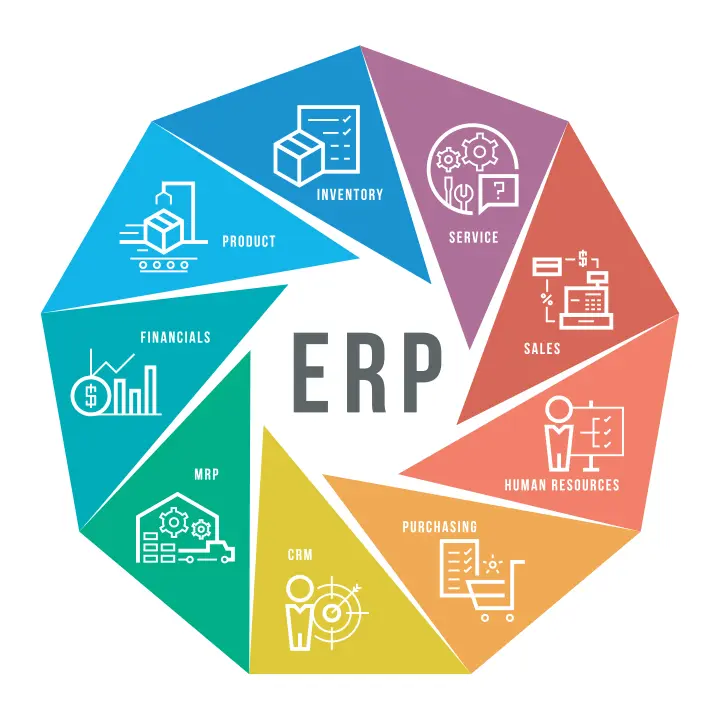
The above common-sense driven thinking can be summarized in the following three sequential steps:
- RISK IDENTIFICATION
Ask “What could go wrong”? - RISK VALIDATION
Ask “So what? If it went wrong, what’s the worst-case impact? Can I accept it in pursuit of my objectives or not? - RISK RESPONSE
Ask “Now what? In other words, what do I do about it?”
While the scope of this article does not allow us to delve deep into the mechanics within each step, let us make an attempt to throw some light into some key aspects to be considered.

RISK IDENTIFICATION:
It is not uncommon to see organizations recognize the impact of uncertainties after an undesired event hits us (ex. a customer recall, losing a key employee to competition or a regulatory lapse). As an alternate to this reactive model, a deliberate proactive effort to scan internal and external factors that could impact a business is the key to effective risk identification. Although a wide range of tools to aid the risk identification exercise is available, an organization must carefully choose methods that align well with their business model and culture. For all that you know, your organization may already be using a few effective tools that can be repurposed for your enterprise level risk identification exercise. For instance, with some effort, several traditionally used continual improvement tools like Value Stream Mapping (VSM) and Failure Modes & Effects Analysis (FMEA) can be adapted to help identify internal risks.
Organizations that are not too complex can probably get away with even simpler tools for risk identification like brainstorming and the use of simple questionnaires & surveys. While these tools can work effectively to identify internal risks, risks that can occur due to factors outside an organization cannot be ignored. An easy way to remember some key external risks is the PESTEL acronym – Political, Economic, Social, Technological, Environmental and Legal risks. Depending on the complexity of an organization’s business model, its products and technology impact, identification of external risks can be challenging. The use of SWOT analyses, competitive intelligence, benchmarking and environmental studies are some tools to consider for external risk identification.
RISK VALIDATION:
Once identified risks are consolidated in a single dashboard view, the task at hand is to assess the impact of each risk event on an organization’s ability to meet objectives. The idea of risk appetite is a useful thought process in this exercise. Let us face it – unless you have infinite resources, it is not practical to try and respond to everything that can go wrong. You have got to pick your battles. In this context, ask yourself what is the maximum risk you are willing to accept in pursuit of your objectives? Once articulated, this becomes your risk appetite. The mechanics of how to articulate an organization’s risk appetite is the subject for another article, however, at this point, it is safe to assume that risk-averse organizations have lower appetites for risk acceptance than their risk-hungry counterparts. Comparison of each identified risk against an organization’s risk appetite allows for classification of the risks into two broad buckets: risks that are lower than your risk appetite; and those that are higher.
RISK RESPONSE:
The heavy lift is done by now – you know which risks are below and above your appetite. “Now What?” In the simplistic model, you accept the risks below your appetite in pursuit of your objectives. What do you do with the one’s that are above your appetite?
You cannot accept it, of course! Ready for another acronym? You can TAM your unacceptable risk – Transfer, Avoid or Mitigate it. While increasing your insurance coverage is an example of transferring your risk to another entity that is willing to accept it, the concept of risk avoidance would require you to stop engaging in any activities that can result in the particular risk. Mitigating a risk is where you engage in continual improvement initiatives to bring the risk below your appetite. Lean, Six Sigma and other problem-solving tools come in handy for this option. Post implementation reviews to ensure long term effectiveness of the risk response actions must be completed diligently.
CONCLUSION:
Seamlessly embedding the ERM process within an organization’s strategic planning and operational monitoring activities will enable an organization to manage uncertainties in pursuit of enterprise objectives. Such organizations are generally better prepared to deal with uncertainties compared to organizations that do not have an enterprise-level framework for managing risks.
The intent of this article is to serve as a demystified primer for the vast domain of Enterprise Risk Management (ERM). There are several other aspects of this critical subject matter that must be discussed and understood before one can start effectively leveraging benefits. Impact of organization structures, governance model, role of internal audits, development of the enterprise risk-registry, articulating consistent risk appetite, exploiting opportunities from uncertainties, information technology & related security concerns, business continuity and disaster recovery programs are some areas that need further coverage. The author hopes to continue this discussion on this topic in successive upcoming interactions to support the interested reader’s efforts in building a robust ERM framework in pursuit of enterprise objectives.
Sri Vilayanoor is the President/CEO of Ignition Life Solutions, Inc. Management systems consulting firm. He has an MS in Industrial Engineering and BS in Mechanical Engineering.
Company Profile of PTI
COMPANY PROFILE:
PTI (PACKAGING TECHNOLOGIES & INSPECTION) | By Taylor Dowd
PASSIONATE ABOUT QUALITY
Brothers Oliver and Julian Stauffer are senior executives at their family-owned business, PTI (Packaging Technologies & Inspection). As they have taken complete control of the company and grown in their respective professional journeys, Oliver and Julian have found some of their greatest success comes simply from following the company’s values.
On the walls of PTI’s Westchester headquarters hangs a board with these five core values, which have become a symbol of what the company strives to be, a reminder for its workforce and leaders: communicate, do what you say you will do, sound engineering through good science, be passionate about quality, care for others. Those values drive every decision we make,” says Oliver.
The company manufactures test equipment for high risk package testing. Its equipment goes to a production facility or laboratory where nondestructive testing is performed on container closure systems to determine the integrity of the product. PTI is also the North American agent for Waldner, the packaging systems distribution division. A separate entity, Waldner manufactures equipment in Germany and distributes it in the U.S.
PTI services clients in the food and pharmaceutical industries. Benchtop test equipment goes into a laboratory where production line operators test the products to ensure they meet the acceptable standards. PTI has five core technologies: pressure decay, vacuum decay, airborne ultrasound, force decay and high voltage leak detection. In packaging laboratories, this method of testing also aids in advancing the development and design process.
Since its inception PTI has worked to create patented sensory technologies, which have evolved from benchtop systems to inline automated inspection solutions that companies can install into production lines for product inspection.
Today, daily operations at PTI are primarily focused on R&D, marketing, sales and test equipment assembly. Mechanical engineers, electrical engineers, programmers and sensory development scientists work in the 14,500 sq. ft. facility on both the manufacturing and assembly sides of the business. There are three CNC machines and other precision manufacturing equipment on site.
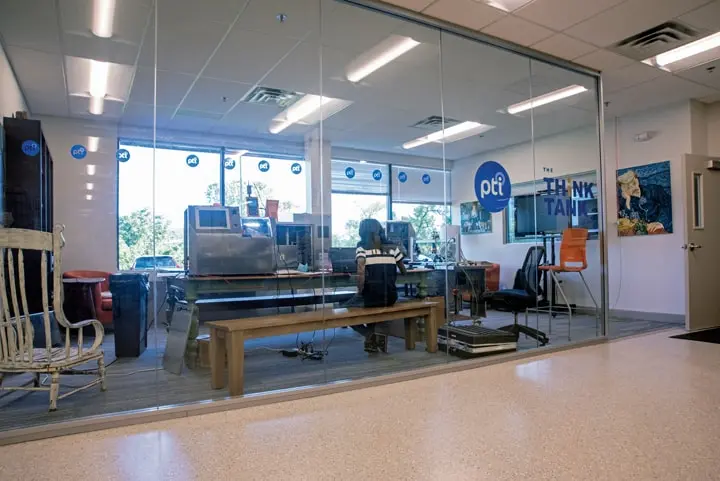
How It All Started
Tony is the founder of PTI and Oliver and Julian’s father.
An engineer at heart, Tony began the company in Tuckahoe, NY in 1985 with Heinz Wolf, who has been with the company ever since, and Lisa Wray, a bookkeeper. Initially, the business focused on importing Swiss-made inspection equipment and manufacturing high precision equipment.
Packaging eventually became the core focus, as the company solely distributed equipment from Europe.
In the early ‘90s, Tony moved the business to a larger facility and began manufacturing inline container testing systems, which it manufactured and distributed directly.
They continued distributing leak testing systems through the late ‘90s, when they began designing their own leak testing technology. The company manufactured and sold leak detection systems. Waldner filling and sealing equipment began to take off, as its product line became the primary product being distributed.
In 2000, the Waldner packaging division became an integral partner with PTI, as the inspection processes continued to grow. It became the focal point of the business and generated a majority of company profits. The inspection side was still largely undeveloped until Tony began developing new technologies. Today, the inspection team at PTI has 55 employees. Inspection technologies are what Julian calls the “heart and soul of our company.”
The CEO
Oliver studied environmental science as an undergrad and completed a summer internship with PTI. His background in science allowed him to implement more scientific-based principles in an otherwise engineering-focused business. He is not an engineer by trade; he learned everything from his dad. After taking a sabbatical following graduation, he returned home and joined the company in 2005, beginning in R&D.
Failure has played a massive role in Oliver’s professional growth.
In 2008, he developed a patented sensory technology; however, the project ultimately failed. Oliver explains the failure was a challenge, but more importantly a learning experience. He learned the importance of developing fail-safe technologies, providing superior client support, and what it takes to create a successful business.
“Never lose a good opportunity to learn from your mistakes and be resilient in your response”, says Oliver. He attended business school afterwards before continuing his work at PTI.
The COO
Prior to Julian’s employment at PTI, he worked as an industrial engineer for a Stanley Black & Decker manufacturing plant in Texas. He took a sabbatical in Central America with plans to stay for at least a year. When he received a call from his dad encouraging him to consider the future of PTI, Julian made the decision to return home after six months to try out the family business. Satisfied with his experience in the corporate world, Julian joined PTI in 2010.
He began as a service engineer, then advanced to working on and selling products to major food companies across the U.S.
Julian took leadership and development courses and became involved with the packaging technology side of the business. His contributions to several major projects from start to finish kick started fast rising success at the company.
Working with Family
Working for a family company means being entrusted with responsibilities in a safe environment. Reaching success becomes more possible with the help of accessible coaching and learning directly on the job. Julian and Oliver were able to learn firsthand about business from real industry exposure.
They are humored by their father’s repetitive advice, and they acknowledge that the habit has instilled important information from him. “We went into meetings where he’s drilled the same points again and again. It engrained certain values, certain principles, certain mentalities into us,” Julian says.
At 38 and 34 years old, Oliver and Julian still receive advice from their dad frequently. Even as leaders of the business, they respect their dad’s wisdom and welcome his guidance. “I have to recognize that one day my dad will not be there. I will not have the benefit of hearing his voice say those things. That has me appreciate and take the time to listen to him on those 7:00am phone calls,” Oliver says.
They recognize the dynamic of working for family and the opportunities that come along with it. “You’re handed the keys to the vehicle far earlier than you should be handed those keys. And, you learn pretty quickly how to drive that car. We’ve been given a high level of trust but given the coaching along the way,” Oliver says. Still, they wanted to maximize their own potential for growth and success. “We didn’t want to be the children who were handed the keys to the car. We wanted to earn them.”
Both Oliver and Julian recognize how impactful their father’s relationship has been on their lives – not just professionally, but personally. Today, Tony is removed from daily operations at the business but fulfills his position as chairman of the board. He owns an affiliate operation in Europe and has since become a customer of PTI by distributing its equipment.
Part of PTI’s success comes from striking a balance between old and new leadership. While Tony is in a different role than when he started the business, he remains a special part of the company, not just for his insight as a businessman, but as a mentor and father.
Oliver hopes to “capture his voice and always have it there.” He explains part of the leadership transition is to “honor the past, be really clear about the present, and map out the future.”
The Workforce
PTI hires people from all over the world. Its workforce is composed of employees from China, India, Russia, Africa and Europe, to name just a few places. Some employees are not U.S. citizens, so the company sponsors their visas. Because Tony and Heinz both came to America on visas, Oliver and Julian recognize the importance of supporting those on that same journey.
“We want to take care of people. We want to give people the opportunity to succeed,” Julian says.
The company has employees over the age of 70. A significant portion of its workforce is under age 30 or over 50. The diversity in experience within the organization makes mentorship between the generations a key driver of success. Diverse backgrounds and various perspectives help build the company and allow different ideas and mindsets to join together to help reach decisions. Providing a collaborative work environment is part of their leadership responsibility, Oliver explains. “Julian and I have worked very hard to develop the culture we feel will create success for this company.” PTI looks for dedicated team members with strong work ethic and commitment to quality. “We have a strong appreciation for intelligence and attitude,” Julian says.
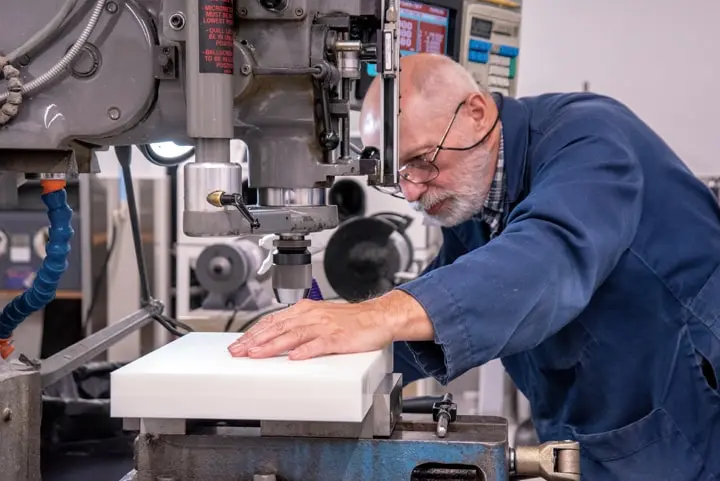
Navigating COVID-19
PTI has not seen a shift in its standard growth path since the pandemic began, and has managed to maintain its success. The company has retained its workforce and even brought on several new employees since. Oliver explains the team has been agile and remained dedicated during COVID-19. “We never stopped. We never skipped a beat. We continued to put faith in the workforce.
The goal here is not profit. It’s to get to the end of the year as one team.” Management phone calls, webinars, and an online presence have helped normalize company operations. Some employees were able to take equipment home to assemble pieces in their garages, workshops, and basements. PTI assembled part kits that allowed employees to assemble leak testers for client deliveries from the comfort of their homes.
Looking Ahead
PTI does not look to expand into a wide breadth of markets; however, the company intends to improve by developing new systems and automating its technologies. It is focused on the field of robotics and is currently building a large automated system for syringe leak detection. PTI hopes to optimize its physical space by expanding the R&D area and assembly floor. As the organization grows, making more space for the manufacturing and assembly areas will ensure there is room for all operations. Moving towards automation means the need for more warehouse space and potentially relocating.
Julian will be stepping down as COO. He acknowledges the success of the company and the leadership of its employees play a major role in his decision. “[Oliver] can handle the company just as our dad did. We’re growing so much as a company and having other people step up. It says a lot about what we’ve done,” he says.
In 2020, both executives have achieved success with the state of their family business and are content with its progression.
Ultimately, they agree that sticking to their core values is essential for leading their company. “If you deviate from those values, you’re no longer playing the game you set out to play,” Oliver says.
When it comes to making the most difficult decisions, adhering to them ensures all choices are in the company’s best interest. As PTI expands, the values will remain fundamental to growing and changing the future of the business.
Taylor Dowd is journalism graduate of SUNY New Paltz. She is now a freelance writer living in Fishkill, NY.
Business Analytics

INDUSTRY 4.0
SCHOOL OF BUSINESS SUNY NEW PALTZ | Dr. Chih-Yang Tsai
The Time Is Now To Up Your Business Analytics Capacity
IN GOD WE TRUST, ALL OTHERS BRING DATA
– W. Edwards Deming
The COVID-19 pandemic has disrupted the operation of many organizations. It is imperative for organizations to quickly respond to the shifting markets and improve internal processes. Business analytics, with many of its modeling tools, can help detect new demand patterns, identify predictive maintenance needs, or find the product mix to maximize contribution margin. For small and medium sized businesses (SMEs) it can be daunting to deploy an analytics system, especially with the plethora of jargon surrounding it, such as big data, business intelligence, analytics, machine learning, data mining, and artificial intelligence. On one hand, these businesses fear they will miss their chance to hop on the analytics bandwagon, but on the other, they are frightened because they simply do not know where to start. This discussion provides a roadmap for SMEs seeking to build a data-driven decision environment.
DRIVE OUT THE FEAR
Regardless of the jargon, those buzz terms are all about applying quantitative methods on data to extract information or knowledge.
Formally or informally, every organization must have some quantitative analyses already in decision processes, such as budgeting and quality control where decisions are made based on observed patterns.
Besides, there is often no universally agreed upon definitions of those terms. For example, some people consider Business Intelligence as the umbrella term for all other terms, while others view it on a much narrower scope, i.e., the ability to drill-down, roll-up, and chart a multi-dimensional dataset. For the purposes of this discussion, the word “analytics” will be used as a generic term for all quantitative modeling techniques applied on a dataset. When initiating changes in an organization, such as implementing an analytics system, there are often two major concerns from top management: the amount of resources needed and potential employee resistance. However, analytics can be done using tools as simple as an Excel spreadsheet or as cost effective as free open source software. Additionally, resistance is often eased as employees become more familiar with the tools. The following approaches and cases provide insights on how to overcome these two hurdles.
JUST DO IT
For beginners, learning-by-doing is a good way to soften resistance. Through “doing”, organizations nurture a data-driven decision making culture. This culture is built on trust, through engagement, which in turn stems from internal conversations on the results of quantitative analysis. The numerical result serves as a frame for the conversation. However, organizations also need to be aware of the number trap inherent in many key performance indicators (KPIs) for two reasons. First, hardly any indicator can measure the overall performance of an organization.

Obsessing with one goal could improve a specific metric but will likely lead to a sub-optimal solution for the organization as a whole. Therefore it is recommended businesses utilize a balanced scorecard approach. The second reason is, as Goodhart’s Law claims, “When a measure becomes a target, it ceases to be a good measure.” What we often see with a quota-based reward policy is people incentivized to manipulate the system. To develop a data-driven decision making culture, an organization needs to create an open and non-threatening atmosphere when discussing the quantitative result. The discussion is not about assessing the performance of a unit or an individual, but about engaging in a team effort to continuously improve the process for the benefit of the entire organization.
This culture building process is similar to the development of a Total Quality Management culture through W. Edwards Deming’s Plan-Do-Check-Act (PDCA) cycle. So, beginners can start small but keep pushing the envelope. It is also helpful to identify an enthusiast in the early stages to champion the endeavor. TYPES OF ANALYTICS Analytics methods are commonly classified into three categories, descriptive analytics (what has happened), predictive analytics (what will happen), and prescriptive analytics (what to do).
Dashboard and statistical control charts are examples of descriptive analytics. Demand forecasting is an example of predictive analytics where a model identifies the pattern from the historical data and uses it to project future movement. Prescriptive analytics aims at providing a decision for action, for example, “make or buy?” Prescriptive analytics also includes optimization models that find the best decision to achieve a prescribed goal, given some constraints. For example, a product mix decision determines how many of each product to produce in order to maximize total contribution margin while meeting certain requirements and satisfying resource limitations.
A common mistake for starters is asking “what can a model do for us?” instead of “what do we want a model to do for us?”
USEFUL EXCEL TOOLS
Beyond basic data organization, processing, and charting functions, Excel has many powerful functions and add-in’s suitable for business analytics including (1) pivot tables: a multi-dimensional data aggregation tool, similar to the drill-down, roll-up function in Business Intelligence, (2) financial functions: useful for investment decisions, (3) statistical functions: distribution functions good for running simulation studies, (3) the Analysis ToolPak add-in: which includes statistical tools for descriptive analytics and regression functions for predictive analytics, and (4) the Solver add-in: an optimization problem solver for prescriptive analytics.
CASE 1: AN INCREMENTAL APPROACH
A company operates a fleet of sixty small vans to replenish its vending machine merchandise located across several cities. The company currently leases most of its vehicles. Because the leasing company covers all recurring and incidental expenses, managers prefer this risk-free option with a predictable cash outflow. However, relatively low interest rates have prompted the company to consider the buy option and in fact it even purchased several vehicles in recent years. As there has never been a formal evaluation of the two options, the company now wishes to use an analytical approach to drive its decision-making process. In its first effort, the company estimated the average cash inflows and outflows for the two options by vehicle ages and used the estimates to calculate the net present value (NPV) of each option under a range of capital cost rates. An Excel spreadsheet organizes the expected cash flows and calculates the NPVs using the built-in NPV function (Figures 1 & 2).


The initial model indicates the buy option is a better choice within most of the range of capital costs. During a discussion of the findings, the financial manager raised an issue that the average expense approach did not consider the risk of unexpected surges of vehicle maintenance cost, which may strain the company’s cash balance. Thus, in stage two, the average maintenance cost estimate was replaced by another estimate obtained from a forecasting model on the age of vehicles, which incorporated a risk factor measured by the standard deviation of the expected maintenance cost. The updated model demonstrated that when the size of owned vehicles increases, the overall risk is reduced. Hence, the buy option is still a better choice under an acceptable risk level. In the next stage, the company plans to build a fleet level decision model that minimizes total fleet cost by finding the best mix of owned and leased vehicles, subject to a cash outflow constraint and a risk tolerance constraint. This incremental approach not only advanced the company’s analytics capability, but also motivated employee buy-in through engagement. A small project such as this provides an excellent starting point due to its clear objective and limited scope.
ASK THE RIGHT QUESTION
A common mistake for starters is asking “what can a model do for us?” instead of “what do we want a model to do for us?” A model is useful only when it solves our problem. So it is important to focus first on asking the right business question, and not worrying about whether there is a model to address the question or not. Chances are, there is something for every question at least to a certain degree. Given the uncertainty involved in a decision environment, anything that sheds some insight on the issue is better than a wild guess. Furthermore, an established PDCA process with employee participation should have a self-correction mechanism. Team members should keep challenging the answer so as to refine the questions and the models.
MOVE TO THE NEXT LEVEL
Initially, companies want to avoid over investing in software, hardware, or personnel, because they might be underutilized during the learning period. Once a company passes the introductory stage and has built up some momentum, it is time to increase the investment and accelerate the pace of development. Although Excel is a good tool to begin with, it is hard to maintain when building more sophisticated models. There are several next level options to expand an organization’s analytics arsenal. Companies wishing to minimize coding need can opt for Excel add-in packages such as Palisade’s DecisionTools Suite or cloud-based services such as Microsoft Azure, which offers drag-and-drop modeling tools. Most vendors offer trial accounts for potential customers to try out. If the company has analytics specialists, open source software like Python and R are free and powerful. Since both programming languages are popular in college curricula, there is no shortage of programmers familiar with these tools. If the company has no designated analytics/IT personnel yet, it should seek to hire or assign one person with analytics and database skills to take charge of further development.
“How can analytics enhance my company’s competitive advantage or be a competitive advantage itself?”
Because analytics relies on data, this is also the time to start working on a data strategy. The first step is to consolidate all separate data sources. The data does not need to reside on one machine, but it needs to be integrated under one framework for data integrity and security. This ensures all analyses are based on clean, consistent, and up-to-date data.
CASE 2: UP TO THE NEXT LEVEL
A company developed a spreadsheet model to allocate its annual marketing budget across products and marketing channels in order to maximize its ROI. Overtime, the spreadsheet has incorporated more and more factors which turned into chained Excel formulas spreading across 20 worksheets. The model allowed managers to adjust the budget allocations and automatically update the resulting ROI through the formulas. As this continued to grow, the company realized the spreadsheet approach had become too cumbersome to maintain. It hired a consultant to rebuild the model in R with a frontend user interface (UI) and an optimization module. The new system simplified the interface allowing users to easily adjust and experiment with different assignments through scroll bars and improved the ROI by 15 to 20 percent on average based on an initial assignment by the managers.

CONCLUSION
Companies routinely collect transactional and process data.
Manufacturers in particular, have a great amount of process data generated from their machines and quality control measures. This data is a great starting point for analytics projects because process data tends to have less noise compared to market data. For example, analytics models have been used to analyze a machine’s vital signs for preemptive maintenance. With more IoT devices adding to the equation, manufacturers without a data strategy may be overwhelmed by too much data, while also being frustrated by the lack of analyticsbased insights.
Creating a data-driven decision making culture is not something that can be achieved overnight by acquiring software, hardware, or specialists. SMEs can overcome the two hurdles by following the roadmap discussed. Once you have established that culture, you are equipped to address the big question, “How can analytics enhance my company’s competitive advantage or be a competitive advantage itself?”
Dr. Chih-Yang Tsai has a Ph.D in Operations Research and is a professor of Operations and Decision Sciences in the School of Business at SUNY New Paltz since 1993.
Emerging Leader Fall 2020

MANUFACTURING LEADERSHIP
Conor McGarry, Plant Manager Zumtobel Lighting | WITH JOHNNIEANNE HANSEN
LIGHTING THE WAY
The Council of Industry’s certificate in manufacturing leadership (CML) is a cornerstone program of our association. We thought we would follow-up with a recent graduate of the program to learn more about them, their role in their company and what, if anything they took away from the program. In this article Council of Industry Vice President Johnnieanne Hansen interviews 2015 CML graduate Conor McGarry.
JH: So why don’t you start with telling me a little bit about Zumtobel Lighting?
CH: Zumtobel Lighting is a global company, here in the U.S. we manufacture lighting fixtures for the commercial, industrial, and residential industries. We have done and continue to do major projects with some of the largest name brands in the U.S. in various industries. It can be a million-dollar project, or a four hundred dollar project depending on the size of the spec.
JH: Currently, what is your role?
CH: I’m the plant manager here. I manage day to day operations, planning head count, working with continuous improvement, productions scheduling – including a daily production meeting with each department. I also work directly with customer service to make sure they are updated with lead times or delays. I’ve been a plant manager for just over two years.
JH: Tell me how you got here, what was your high school experience like and how did you get into manufacturing?
CH: I did not have a lot of direction, on my own part, I was going through the motions. I did not see a clear picture of what I was going to do. It was more, get by with decent grades, get into a good school and it will work out.
JH: Did you have the opportunity to take engineering classes or vocational programs like BOCES?
CH: Yeah, I mean I had the opportunity, but I didn’t go. I would never want to put this on others – it was primarily my lack of direction, but the meetings that I had with counselors and family friends, topics like BOCES didn’t even come up. I knew about BOCES, but I didn’t consider myself mechanically inclined, I wasn’t the kid who spent my time tearing down and rebuilding engines for fun. When I was looking at what to do in college, I never even considered engineering, at that point I thought I wanted something interesting to me, like history.
JH: I know you went to Manhattan College, what was your major?
CH: I did three years in general studies at Manhattan College with a focus on sociology. I just couldn’t figure it out when it came to education. Maybe it was the structure of it that kept me from making it work, knowing that if I wanted to study sharks I had to learn about every fish in the ocean, which was not appealing, it was not simple for me. I wasn’t motivated enough and maybe I needed to have my back up against the wall to get motivated at that point in my life.
JH: At that point, you decided to leave school and look for a job?
How did you end up working at a machine shop?
CH: I took that route because it had been something my father did before he made his career choice, working in manufacturing.
My grandfather had been heavily involved in it too, with a company in Poughkeepsie that is no longer around.
When I started in the workforce, I knew I had to be aggressive about it. I was determined not to move backwards and was looking for a job that had potential.
JH: It seems like you hit the ground running, considering you didn’t have any machine shop experience. How did you manage to break into the industry?
CH: When I started in the machine shop, I think my perception was, okay, I’m not the most experienced or talented on the machine but I was certainly the guy that they could rely on. I saw a lot of talent around me, but not really the drive to advance. The people at the shop seemed to be satisfied with where they were.
Partly because I was young, I saw the opportunity and I was a little more aggressive about it. Being eager and assertive earned me some leadership roles with that first company.
After two years I was looking for a new opportunity and ended up at Zumtobel in the machine shop. I saw the same kind of scenario; people were content but there were opportunities to grow.
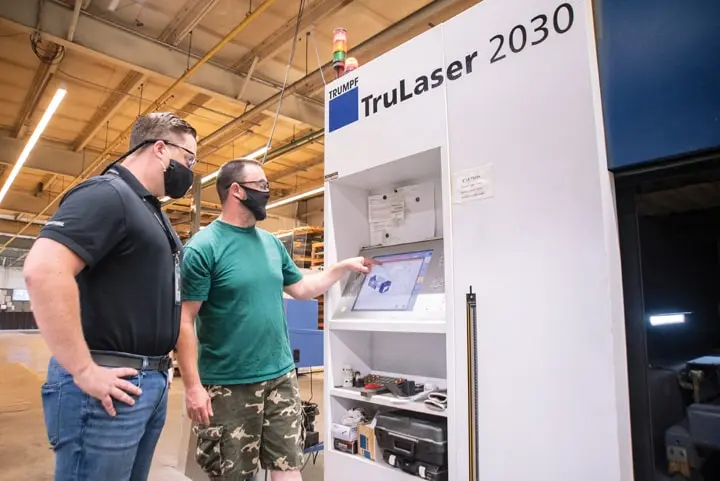
JH: Sometimes we hear that it is difficult to change directions in this field. How did you get from the entry level machine shop to a plant manager?
CH: I remember this guy walking by who I really didn’t know, he worked in the research and development department and he said he was quitting. And I said, I’m going to wait for him to leave and walk into H.R. and tell them I want the job, not even wait for them to post it. I had taken a beginner AutoCAD class at BOCES and had some drafting experience. I got that position. It was an engineering role with new product development, I worked closely with new product development engineers. They would come up with the design, I could go to the factory, produce the parts, do a mockup and give feedback.
JH: At that point was your superpower that you had already been on the other side and that you were coming into the engineering side with that production experience?
CH: Yes, absolutely. It was having that taste of the factory and being able to bring that over to the engineering side rather than bringing in someone new who really didn’t understand or maybe was not fresh with the product or the machinery.
But yeah. And it’s pretty much the same story going into the next role.
A few years later I took a big jump into sales. I knew a position was going to be available and I wanted to pursue it, I went after that role and then spent four years doing post sales management. It was a good fit because of my technical ability and understanding of the product. It required travel all over the country and in some cases overseas. If an issue came up in the field with a contractor or an end user, I would assist either remotely or onsite and work directly with their contractors on the issue. After proving myself for a few years, I was approached with the opportunity to come back into operations as a production supervisor, it was the right time. I was in my late 20’s and I didn’t want to be traveling for the rest of my life.
Over the next few years opportunities came up as a natural progression and I’d like to think I was a logical choice for the Plant Manager position when it opened up.
I wouldn’t say I landed here – it was a combination of gaining experience, learning from those around me, and seeking opportunities. It was also a lot of hard work.
JH: In 2015, you were coming back into the operations side and beginning your leadership career, you also completed the Council of Industry’s Certificate in Manufacturing Leadership program – tell me a little about your experience.
CH: The certificate program was great. The classes were designed to take you from where you are, in some cases it’s foundational, but that is the purpose – building on what you already bring to the table. The certificate program helps you expand your perspective and provide skills to approach leadership – it is not a cookie cutter approach.
I think there is a misconception that leaders need to cater to employees – to be a good leader you just need to cater to every whim and abandon standards, expectations, goals or productivity.
That is a misunderstanding. I think it is about developing people, learning how to get the best out of them and caring enough to do so. It is about caring, not catering.
JH: What advice do you have for decision makers that are considering sending their employee to our program?
CH: Companies should send individuals who really want to understand and embrace the opportunity, people who will be open to learning and want to expand their leadership capabilities.
Leadership is more than just a role you are placed in, sometimes companies send people they are trying to change versus identifying individuals who are eager to learn, grow and lead.
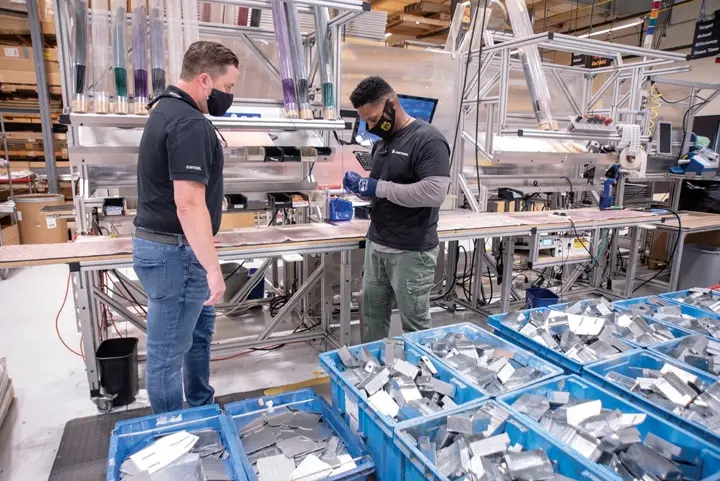
JH: What course stands out in your memory?
CH: That’s easy. “Issues in Human Resources Management.” It was presented by Jackson Lewis, labor attorneys. They covered things from the legal side. If you are not in human resources, it’s possible to take it for granted or dismiss it or even get annoyed by various policies. Tom McDonough and his colleague took a difficult and possibly dry topic and made it interesting and impactful. Whenever another Zumtobel employee attends the leadership program, I always ask them about the HR class and they say the same thing, it’s like seeing behind the curtain and the trainers are great.
Also, I can’t say enough about “Fundamentals of Leadership” with Rebecca Mazin, it was helpful to begin the program with a process to identify your own leadership style. I try not to get too stuck on it because I want to be versatile and continuously improve, but sometimes it helps to understand yourself and how you approach a situation. It also gives you a frame of reference to understand the leadership styles of your peers and how they approach the same situation.
JH: In addition to the presenters and the leadership topics, what else stands out about the program?
CH: I really enjoyed meeting people from other companies.
I’ve spent most of my career at Zumtobel, and the Certificate Program gave me the opportunity to hear other manufacturing professionals share their experiences. Hearing their stories, how they manage day to day and deal with people, it was very interesting. Being able to interact with them on a common goal opened up my eyes to the benefits of collaboration and gave me some insight into how other places worked.
JH: 2020 took a bit of a turn back in March…
CH: Yeah, yeah, yeah. It was a roller coaster at first. It all happened quickly. Friday morning, we were shutting down until further notice. We were going to keep a few essential employees, the sales force and a skeleton crew working remotely. But the factory was shutting down. By that afternoon we were deemed essential. We called everyone back.
Since then we’ve been adjusting everyday. We are trying to be as prepared as possible, to keep the doors open and keep people safe. We made changes to the facility, spread out production lines, broke up lunch breaks to small groups. We enhanced our regular cleaning and deep cleaning, and if there was a concern even deeper cleaning, we started doing temperature tests every morning.
JH: In terms of workload, productivity, orders, how are you guys doing?
CH: From a procurement perspective, we had some difficult months, getting materials was a challenge. We have vendors in China, South America and California, it was an issue. If we were able to get the material and complete the order, it was challenging to get it out – things were on hold, job sites were on hold, if we had the order complete, we couldn’t ship it.
We knew it was going to have an impact. If we wanted to stay open, we needed to do something about it. We partnered with Usheco, a manufacturer of custom plastic parts and Council of Industry member and Wepco Plastics out of Connecticut to produce face shields. Wepco’s orders were overwhelming, they could not keep up. We reached out because we had capacity. We knew If we took on some of the assembly, we could keep people working. We ended up assembling them, we did not do anything with the raw materials, but getting the components together and coordinating, we ended up manufacturing about sixty thousand face shields, helping to keep our community safe and people employed.
JH: As we know, this is all unprecedented and employees are stressed – talk to me a little about leading your team during the pandemic?
CH: It is not as simple as telling people what to do and managing projects, it requires bigger thinking and taking more factors into consideration. It also means managing during difficult times.
We had to keep in mind that people were scared. People may not have been sharing everything that was happening within their household or their community, but what they are going through impacts them, including their workplace situation. Sometimes leadership requires a different level of finesse and patience.
JH: What advice would you give to young people considering a career in manufacturing?
CH: I give myself as an example. I would tell them, I started here as a machine shop operator and now I’m a plant manager. There’s possibility here for anybody. At Zumtobel, the training is here, you don’t have to worry about that, they will invest in you and there are opportunities. It comes down to your end of the deal, your determination and motivation.
And I think in the manufacturing industry, there is a lot of room for that growth because experience goes a long way, especially if you stay with the same company over a period of time, being able to do that will open doors.
What We Are Reading
PROFESSIONAL GROWTH AND DEVELOPMENT
WITH INDUSTRY LEADERS
WHAT ARE YOU READING?
HV Mfg asked Council members from the manufacturing community to recommend a book, article or podcast that impacted them personally or professionally.
Jennifer Clark – GlobalFoundries
The Title: Option B: Facing Adversity, Building Resilience, and Finding Joy
The Authors: Sheryl Sandberg and Adam Grant
A Brief Summary: Life happens – and hardships are a part of it.
Option B provides a personal account from Sheryl Sandberg following the sudden death of her husband as she figured out what came next for her family. Sandberg partnered with researcher Adam Grant to establish practical tips to build resilience for herself and her children. Building on personal examples from Sandberg and others, this book creates a framework around how to get back up following a crisis. It provides hope that when Option A is no longer available, you can keep going – and thrive – with Option B.
In What Ways Did You Find It Valuable or Impactful: Option B provides timely insight on how to deal with the collective changes that are ongoing during the COVID-19 pandemic. One of the most difficult challenges for me has been how to support my daughter through the loss of her school routine and the accompanying social isolation from friends. The advice in the book on ways to build resilience in children was helpful and practical. It helped me re-frame this time as an opportunity to help my daughter grow confidence that she can handle difficult things. The power of this book is in helping you realize you have the choice of how you navigate life, especially in response to adversity. Given everything in the world we can’t control, reading Option B gave me reasons to be optimistic and appreciative of the joy that life has – even in 2020.
Luke Stoddard – LeChase Construction
The Title: Leadership GO BIG Podcast Series
The Authors: John Maxwell and Don Yaeger
A Brief Summary: John Maxwell (Leadership Expert) & Don Yaeger (Former Associate Editor, Sports Illustrated) did a Leadership podcast series called GO BIG where they interviewed Sports Icons & Leaders in the Sports World. This specific Podcast was an interview with Arthur Blank (Owner of the Atlantic Falcons and co-founder of Home Depot). In the interview Arthur Blank explains the 6 Key Guiding Principles that are the Culture & Foundation for all of his companies.
In What Ways Did You Find It Valuable or Impactful: The 6 Key Principles are:
- Put People First,
- Listen and Respond,
- Include Everyone,
- Innovate Continuously,
- Lead by Example,
- Give Back.
When I first heard these principles, it was like an Aha moment, they just made sense to me. Then I began to ask myself am I doing these? Which ones do I struggle with? As a Leader in the Construction Industry, it is easy to get caught up in focusing on making a profit because that’s what keeps the doors open and the business going. However, Arthur Blanks’ thought process is this: “If you drive the right behavior you will get the right financial results.”
Wow, what a different way of thinking. This really opened my eyes to the importance of doing just that “Driving towards the right behavior,” first in myself and then in others. Since hearing this Podcast I have made a commitment to apply these principles in everything I do, and to also coach/ mentor others on these as well. It’s still a struggle and I am not perfect, but I believe that if more of us apply these 6 Principles in our daily lives, the better this world will be.
Julian Stauffer – PTI
The Title: Be Angry
The Author: The Dalai Lama
A Brief Summary: The Dalai Lama has a lot to say about love, compassion, and avoiding anger, but he also realizes that anger is an important emotional state of being human. Suppressing anger or never showing anger begins to eat away at ourselves from the inside out. In today’s world, there is much to be angry about. This is a very short and simple read on how to use compassionate anger for social transformation in true Dalai Lama style.
In What Ways Did You Find It Valuable or Impactful: The book has helped me access emotions that are generally seen as unacceptable by society. Anger is an important human emotion that can be destructive in the long run if you are not in touch with it. It is OK to be angry. As an introverted person, I have had difficulty with expressing emotions, especially ones that are negative. There is a part of me that is now allowed to be angry. The Dalai Lama has given me a pathway to use anger in a compassionate way.
Kelly Lyndgaard – Unshattered
The Title: The Art of Possibility
The Author: Rosamund and Benjamin Zander
A Brief Summary: Twelve breakthrough practices for bringing creativity into all human endeavors, The Art of Possibility is the dynamic product of an extraordinary partnership. The Art of Possibility combines Benjamin Zander’s experience as conductor of the Boston Philharmonic and his talent as a teacher and communicator with psychotherapist Rosamund Stone Zander’s genius for designing innovative paradigms for personal and professional fulfillment. The authors’ harmoniously interwoven perspectives provide a deep sense of the powerful role that the notion of possibility can play in every aspect of life. Through uplifting stories, parables, and personal anecdotes, the Zanders invite us to become passionate communicators, leaders, and performers whose lives radiate possibility into the world.
In What Ways Did You Find It Valuable or Impactful: This is my favorite leadership book. It helps you see the best in everyone, call out their strengths, and breathe possibility into their future. I love this book for any leader on my team as it reframes the way we see ourselves as leaders and the team which we lead. The Art of Possibility balances the gift we can give others as seeing them as their best selves, and the necessity of holding people accountable for their effort. A true glimpse into what it takes to build a well “orchestrated” team from the conductor of the Boston Philharmonic Orchestra.
John Yelle – Pratt & Whitney Advanced Coating Technologies
The Title: Socrates Discovers Generic Management
The Author: Xenophon
A Brief Summary: Socrates is best known for establishing that “the unexamined life is not worth living.” But he also found time to argue for the universality of management, that a successful business leader could be an equally effective general. The underlying doctrine of universal or generic management holds that a properly trained manager will be effective in any type of organization, whether public or private, whether in service or manufacturing. Socrates Discovers Generic Management is a dialogue Socrates has with Nicomachides, a decorated captain and centurion for the Athenian army who was passed over for a position as a general in favor of a well-known merchant. In short, Socrates discusses the notion that being the best soldier does not automatically make one the best for a high-level leadership position, as the ability to manage diverse needs and limited resources may indeed by best placed in the hand of a person skilled in such things.
In What Ways Did You Find It Valuable or Impactful: I love this lesson and I like to remind myself of it and the lesson it presents. I also share it with management classes I teach. It demonstrates that even thousands of years ago they understood that leadership of an organization requires more than just expertise in day-to-day tasks.
Ben Katzenstein – Star Kay White
The Title: Milk, A 10,000-Year History
The Author: Mark Kurlansky
A Brief Summary: While mother’s milk may be the essence of nourishment, it is the milk of other mammals that humans have cultivated ever since the domestication of animals, more than 10,000 years ago. Today, milk is a test case in the most pressing issues in food politics, from industrial farming and animal rights to GMO’s, the locavore movement and advocates for raw milk, who controversially reject pasteurisation. Profoundly intertwined with human civilization, milk has a compelling and a surprisingly global story to tell.
In What Ways Did You Find It Valuable or Impactful: Kurlansky is a superb food historian. I’ve read his other books on Cod, Salt, The Big Oyster, The Last Fishing Tale, Paper, and Birdseye. All were excellent. Being in the food business I find all his histories extremely enlightening. Milk is no exception and it helps me put what we do at Star Kay White in its proper context.
Frank Falatyn – Fala Technologies
The Title: I Robot
The Author: Isaac Asimov
A Brief Summary: In my senior year at Kingston High School my chemistry teacher took our entire advanced regents class to Sullivan Community College to attend a day long symposium on science and technology, at which the key note speaker was Isaac Asimov. At the time I did not know what a “symposium” was let alone who Isaac Asimov was. I still, to this day remember Asimov’s talk about the coming interplay of technology and, in particular robotics, with the future of mankind. (This was before computers were invented). In the Q&A session someone asked what he foresaw as the future for government – communism or capitalism. The year was 1975, which was the height of the cold war with TV shows and movies about the coming nuclear winter. I remember his oneword answer… “Neither.” He said a future type of government will arise which we cannot now even imagine. His words cement my ongoing thoughts about becoming an engineer and inventing the unknown future. I went to the school library the next day and checked out my first Isaac Asimov book, I Robot.
In What Ways Did You Find It Valuable or Impactful: I became an engineer and my best days are still spent at work helping our customers design, develop and build their next generation of equipment and technologies.
Harold King – Council of Industry
The Title: How to Think Like A Roman Emperor
The Author: Donald Robertson
A Brief Summary: How to Think Like A Roman Emperor is an introduction to one of history’s greatest figures, Marcus Aurelius. Marcus was known as the “philosopher emperor” who kept a daily journal of his thoughts and actions known as his “Meditations.” He is a prominent figure in the philosophy of Stoicism. The author, a psychotherapist, shows how thinking about the example Marcus set can help people live with integrity. He further shows a connection between stoicism and modern cognitive behavior therapy and how “thinking like a roman Emperor” can help us respond with resilience to adversity and anxiety and all of life’s challenges.
In What Ways Did You Find It Valuable or Impactful: I greatly enjoyed this book for the connection it makes between the “ancient” and the “modern.” We hear a lot about stress and anxiety in our world – particularly among young people. Whether brought about by technology or society or the pandemic there is little doubt that people are stressed and anxious. When we learn that 1900 years ago the Roman Emperor wrote to himself “You have power over your mind – not outside events. Realize this, and you will find strength,” and “Accept the things to which fate binds you and love the people with whom fate brings you together, and do so with all your heart,” we become reassured that things that cause anxiety in us today are not unique and that people have been dealing with them, to one degree or another, for centuries. While I read this book prior to the pandemic I have found its lessons valuable in working through its challenges. The four virtues of stoicism are: Justice, Moderation, Courage and Wisdom. They are as meaningful – and as elusive – today as they were in the time of Marcus Aurelius.
Jon Hilowitz – Orange & Rockland Utilities
The Title: From Rags to Richer
The Author: The Economist Magazine
A Brief Summary: This short article, which appeared in the October 3rd, 2019 edition of The Economist, highlights Julian Richer, owner of the stereo company Richer Sounds. While small businesses are increasingly vulnerable in the retail market, faced with staunch competition from larger distributors who can capitalize on economies of scale and offer a robust e-commerce platform to sell goods and services at reduced prices, Richer’s company continues to thrive. Rebuffing the Friedman-esque view of maximizing profits by any means necessary, Richer found sustained success by virtue of a significantly different model – one which paid employees well above the competition, and which recently saw Richer transfer ownership to employees.
In What Ways Did You Find It Valuable or Impactful: Richer’s business model, which he expounded on further in a 2001 book entitled The Richer Way, provides a success story that we should all seek to emulate, one in which employees are wellcompensated, valued, productive and happy. While Richer’s model surely sacrificed shortterm profits, it’s hard to argue with a track record of more than 40 years of success and an annual sales of more than £200m. Richer achieved wealth and prosperity while simultaneously developing a loyal, reliable staff, and ensuring that a livable wage was paid to all.
Inside And Outside The Box
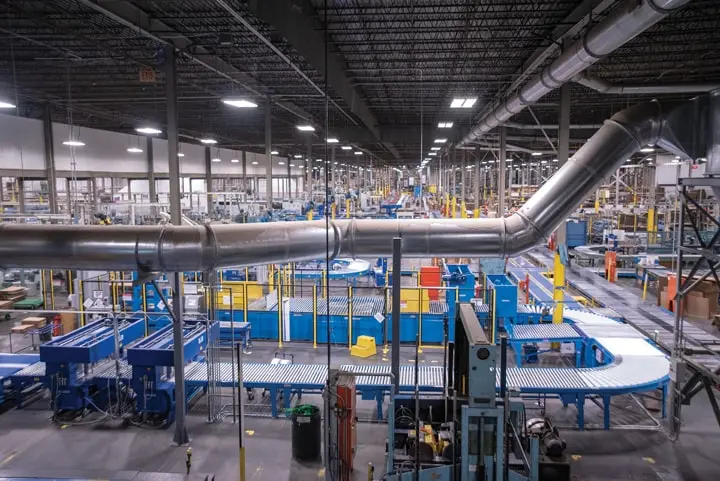
LEADER PROFILE
Richard Goldberg, Vice President of Operations President Container Group
INSIDE AND OUTSIDE THE BOX
COVID 19 has had a huge impact on the economy and the corrugated packaging industry is no exception. Corrugated packaging has evolved greatly over the past 40 years. Even prior to the pandemic the pace of change was accelerating, but now it is seemingly happening at “warp speed.” Richard Goldberg, Vice President of Operations for Middletown’s President Container Group has been navigating change in the industry for nearly four decades and he needed every bit of the wisdom he gained from that experience to help him guide President through the pandemic and emerge on the other side stronger.
HV Mfg sat down with Richard to talk about his role at President Container, career path, trends in the industry, opportunities and challenges for President, and his thoughts on leadership. Council of Industry counts among its friends and members some of the most community minded and generous organizations in the Hudson Valley region. Every day our members and friends donate their time and money to organizations and causes supporting healthcare, education, poverty remediation, the arts and more. So it should not come as a surprise that so many have stepped up to help those in need during the Coronavirus Crisis.
HV Mfg: Thanks for agreeing to do this. How long have you worked in manufacturing?
RG: A long time. 40 years? No, not quite – 39 years. It was while I was in college – I started with a small company that made dental implants on Long Island called Dentaco. I started there as an intern helping them with software for process mapping. I was there for a few months, doing pretty well, when (through a variety of circumstances) they offered me a job. I was a full-time student, they agreed to work around my course schedule, and I agreed to work for them.
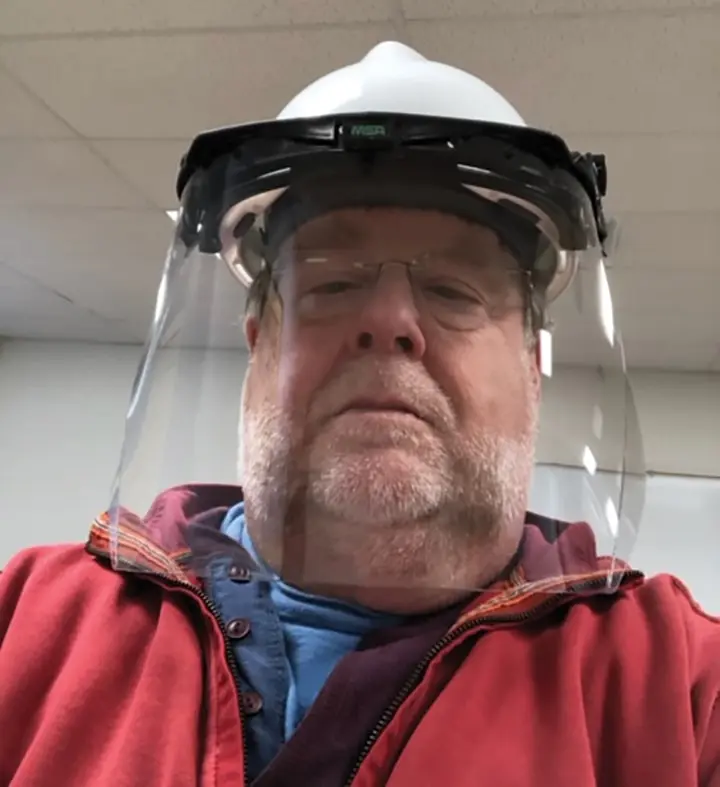
HV Mfg: Where did you go to college, what was your major?
RG: I went to Hofstra University in Hempstead. I had a dual major in business and computer science.
HV Mfg: Computer Science. You were ahead of your time.
RG: A little bit. I learned on punch cards and tape. Some of the languages I learned were Pascal and Assembly. I really was considering Bio-Medical Engineering as the Six Million Dollar man was popular at the time; however few schools were even available then.
HV Mfg: What drew you to computer science?
RG: Truthfully, I loved the logic, I still do. ‘If –then- else.” It is a language and an approach that makes sense to me and helps make sense of problems – especially problems we face in production and manufacturing. It has served me well. My knowledge and expertise writing software is what got me that first job at Dentaco and I apply that knowledge – plus a few years of experience – to what I do at President every day.
HV Mfg: Did you stay at Dentaco after you graduated?
RG: No. I went to work for IBM. A gentleman by the name of Don Martin, who I really liked and taught me so much, was working as an IBM “Value Added Provider” at Dentaco. He saw what I was capable of and got me the position at IBM. My job was setting up the System 34 for customers on the first real time data entry computer. About this time a company called LinPac opened a corrugated factory in Syosset NY. They are a big UK packaging company that was expanding their operations in the United States at that time. I spent about six weeks setting up a production system for them – this was probably 1982 – when they offered me a job in Atlanta. I took it and moved to Georgia. I worked for LinPac, in various capacities until 2009. I was looking for an opportunity to get back to the northeast when this one with President presented itself. I took it and helped open this facility in Middletown in 2010.
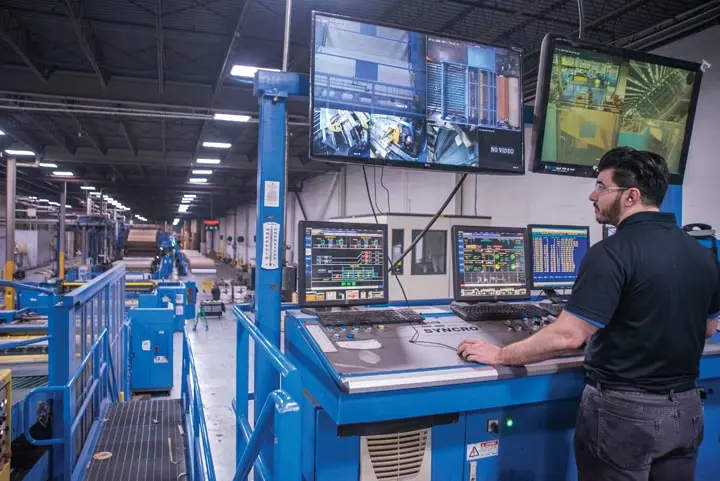
HV Mfg: Your focus at LinPac was on manufacturing process improvement and building “lights out” factories (an English expression at the time meaning automating processes)?
RG: For the most part yes. I went from working on the IT side to the production side of the business. I spent a lot of time on the Y2K problem. I know most people shrug it off, but it was a big deal. We had to re-write so much code – especially in production software and machinery (PLC) software because so much of it was time stamped.
HV Mfg: Tell us about President Container Group. What do you make here in Middletown?
RG: Boxes, lots and lots of boxes. In Middletown, we are President Container and we custom manufacture all kinds of corrugated packaging and partitions for specific clients. Our customers are primarily in the food, cosmetics and pharmaceutical industries but we manufacture for all kinds of clients.
President Container Group, our parent company, is based in Moonachie New Jersey. We were formed in 1947 by Marvin and George Grossbard and we are still run by the Grossbard family. We are now four companies. The one I just mentioned plus Artisan Display & Packaging, Tech Pac, and President Industrial Products.
Artisan Display & Packaging provides high quality graphic art services, structural designers, and project coordinators to help customers create the packaging they need. Tech Pac is dedicated to the assembly, pack out and distribution of point-of-purchase displays. That business actually assembles the customer’s display, packs it with their product and delivers it to market. President Industrial Products is our “off the shelf ” product line. It provides our pre-made corrugated cartons, packaging materials, moving supplies, tapes and printed tapes, as well as janitorial and food service supplies.
HV Mfg: As a critical supplier to food and pharma President is an Essential Business. You remained open during the shutdown correct?
RG: Yes, we never shut down. From the start – in March – we worked extra hard to keep our people safe and our product moving out the door.
HV Mfg: What were some of the actions you took to do that?
RG: I had a little hint that things might get bad here because we had – still have – a big machine on order from a company in Italy that’s delivery was delayed by the shutdown happening there. I was paying attention, running scenarios in my head for what might happen here.
First thing I did was get our leadership team together to develop a plan – and by the way they have been terrific. Brian Sizer, Steve Testa, Dominic Deramo, and Shawn Parson all stepped up big time. We knew we needed safety and cleaning supplies. We knew we had to alter our workflow a bit to keep people distanced.
Most importantly we knew we had to communicate with the employees that we were taking their safety seriously. Our safety guy – Andrew Santiago – did and is doing a fantastic job. And – we needed to convey to them that they were “essential.” The items we were shipping were important and that what they were doing was important if we were all going to get through this.
HV Mfg: How did your workforce respond?
RG: They were terrific. I was, and am, incredibly proud of them. It was stressful for sure – we had close to 30 employees contract the virus – though to the best of our knowledge no one contracted it here at the plant. But we kept up production and met our orders. We look to manufacture 2 billion square feet of containers per year. Obviously, that varies and changes month to month. But that gives you an idea of how hard people work and how important it was to have people here. We began paying an “appreciation bonus” to those who came to work consistently through the pandemic early on and that was the right thing to do.
HV Mfg: What has been the effect of the pandemic on your business and on your workforce?
RG: Business wise it has been up and down, but mostly up.
Trends that were happening before the pandemic have only accelerated. The move to online shopping for example has led to more business for us. Buying online means more boxes, smaller boxes, better designed boxes.
We have now, for example, the ability to print on both sides of the corrugated board at the same time. Imagine a box where the outside is a beautiful product image and the inside has the assembly instructions, not on separate paper, but printed on the inside of the box itself.
Because of the need for all those boxes I also think sustainability will become more and more important to our industry.
As far as the workforce goes, we are short about 50 full-time people at the moment and if we move ahead with the expansion, we will need another 50 on top of that.
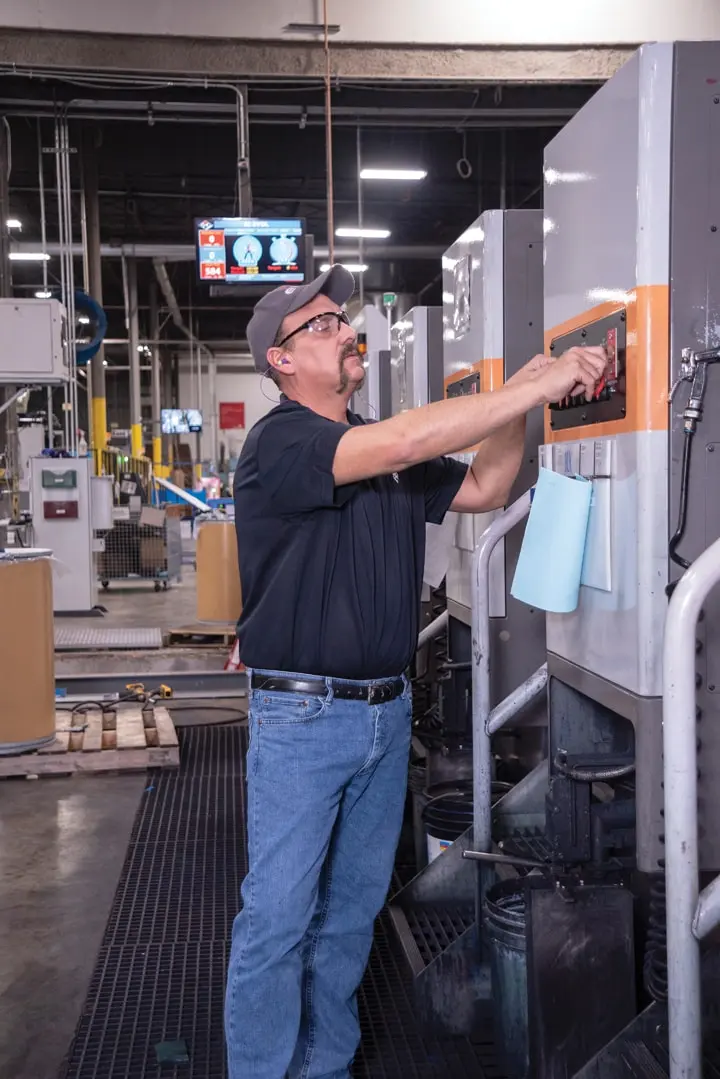
HV Mfg: Before the pandemic hiring was a challenge for you – it sounds like it still is.
RG: The reasons are different, but the challenge is the same – if not harder. Before it was low unemployment and competition for candidates. Now it’s the high unemployment and the government’s supplement to unemployment benefits. Why come to work when you can make $48,000 – $50,000 staying at home? Obviously, there are other issues too – childcare with school closings and vulnerable family members at home for example.
We raised our starting pay to $17.50 per hour and still can’t attract people. Another problem is that even our “unskilled” positions require some basic math proficiency – measuring, fractions, etc. And, we have found that many of our applicants don’t have those skills. We will train you – we are looking into the Council of Industry Apprentice program for example – but we really need to get people through the door and working here.
We began paying an “appreciation bonus” to those who came to work consistently through the pandemic early on and that was the right thing to do.
HV Mfg: You mentioned that COVID has accelerated existing trends. Does that hold true for the underlying issues that impact workforce, the issues that keep people from entering the workforce or keeping a job?
RG: Yes, for certain. Transportation – getting to and from work consistently, affordable housing – we pay well but it is difficult to find rentals or homes that people can afford to live in here. Most of all, and this is just my opinion it’s Child Care. I think there are a lot of people who would love to come to work if they could find safe, reliable and affordable childcare that is conveniently located. With schools closed and child care centers overwhelmed that is certainly a major problem.
HV Mfg: Earlier you mentioned sustainability and I know you are committed to it. Tell us about some of the initiatives you have put in place.
RG: We are committed to a sustainable business model – especially related to energy and waste.
In regard to energy you may have noticed the solar array just east of the building. We installed that in 2016. It provides upwards of two megawatts per day to the plant. We worked with NYSERDA to install energy efficient lighting, motors, compressors, equipment – you name it. Bryn Samuel from ERS has helped us access a lot for NYSERDA resources that make investing in energy efficiency more effective and feasible.
As far as material goes, we are committed to making best efforts in a sustainable manufacturing process. Some of our discharges are recycled using renewable energy. We maximize the use of renewable or recycled source materials – right now that is close to 90% of our material. We use clean production practices and our wastewater treatment is constantly managed. Finally, we design all of our packaging processes to optimize material and energy.
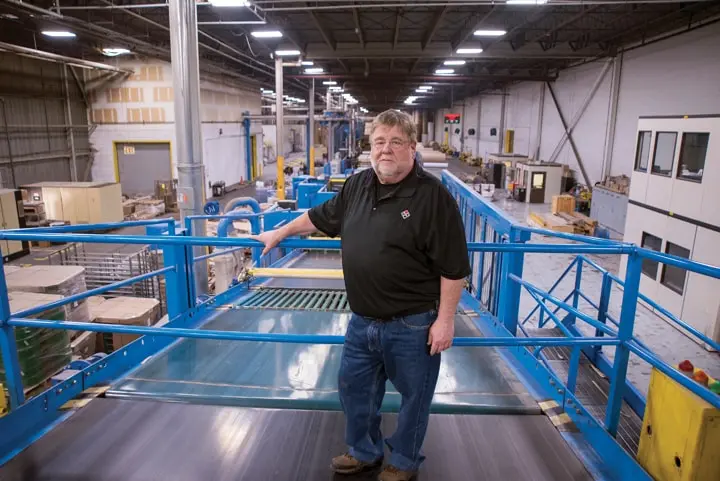
HV Mfg: Is all that customer driven?
RG: In some cases, yes, but we do it because it’s the right thing to do. In the long run – it will help the bottom line, but really, it’s the right thing to do. Look, this is our community. We want people to be proud to use our products, to be proud to work here, we want our neighbors to like and respect us…that is what happens when you do the right thing.
HV Mfg: Finally – What do you think makes a good leader?
RG: I go back to some advice that I received years ago from Don Martin – the guy who got me started in my career and who I have always considered a mentor. The one word to remember is “circumspect.” A good leader observes, considers, listens to all things (no blinders) surrounding a specific challenge and thinks outside the box. Some people think it just means “cautious” but for me it means looking around and considering all the stakeholders, all the options, all the issues.
I’ve been in this industry a long time. I know a lot of the players. I’ve seen a lot of successes and a lot of mistakes. Using If-Then-Else and applying my definition of Circumspect to day to day activities gives greater opportunity for success.
HV Mfg: Did that help prepare you to deal with the COVID “crisis,” – using If-then-Else and being circumspect?
RG: Well, to the extent that we have been successful in the crisis I would have to say yes. I didn’t have blinders on so I did see it coming – probably not the full seriousness of the pandemic, but I was not completely blindsided by it. And, the logical If-Then-Else problem-solving process helped us work through the challenges effectively.
HV Mfg: Thank you very much for your time. We appreciate you sharing your story with our readers.
RG: Thank you.
Policy and Advocacy 2020 Fall

MANUFACTURING POLICY AND ADVOCACY
with HV Mfg Editor
THE 2020 ELECTION EFFECT
Manufacturing is the Key to Economic Recovery and Essential to National Security
— Voters Are Seeing It That Way Too —
More than eight out of ten (eighty-one percent) of registered U.S. voters say a candidate’s position on manufacturing will influence their choice for president this November, an increase of five percent since January, according to a new Morning Consult national poll released in August by the Association of Equipment Manufacturers (AEM).
Voters continue to recognize the sector’s importance to the U.S. economy and the job market. Ninety-two percent of registered voters say that manufacturing is critical or important to the economy, while ninety-three percent say it is critical or important to the job market, a slight increase since January.
A strong majority, nine out of ten registered voters, say it is important for elected officials to support American manufacturers amid the unfolding economic crisis caused by the COVID-19 pandemic. At the same time, registered voters give both presidential candidates poor marks on their support for manufacturing. Fifty percent of voters indicate President Trump has done a “just fair” or “poor” job supporting manufacturing, while forty-four percent of voters believe Democratic candidate Joe Biden would do a “just fair” or “poor” job supporting manufacturing.
“Voters are increasingly understanding how important manufacturing is to U.S. national and economic security and are making that issue a priority in the upcoming election,” said Harold King, president of the Council of Industry. “As our elected officials continue their work to rebuild the economy manufacturing will play a critical role. We need strong, pro-manufacturing policies to ensure that manufacturers are given every opportunity to succeed and we strongly urge both candidates this election year to make it clear to voters how they are going to support U.S. manufacturing in 2021 and beyond.”
WHERE THE CANDIDATES STAND
To date neither candidate has been particularly detailed in their proposals to grow manufacturing; however there are some statements, policies, and clues.
ON TRADE
Both candidates say they want to boost domestic manufacturing.
Trump, who ran on the issue in 2016, stepped up verbal attacks on Beijing as his administration accelerates an initiative to remove industrial supply chains from China. He has also argued that America’s difficulties in procuring medical supplies internationally during the pandemic is another reason to encourage U.S. companies to avoid offshoring.
Biden offered his own made-in-American manufacturing plan, pledging to spend $700 billion on Americanmade products and industrial research, which he said would give at least 5 million more people a paycheck during a job-killing pandemic.
He also proposed a 30.8% corporate tax rate on profits from products made overseas and sold in the United States and would provide incentives to companies that keep jobs in the country. Companies currently pay a 21% rate, which was lowered during the Trump administration.
As a senator, Biden voted in 1993 for the North American Free Trade Agreement (NAFTA), a trade pact that in part helped Mexican factories gain access to the U.S. market.
Biden has criticized Trump’s tariff war with China as bad for U.S. consumers and farmers. However, in 2018, he called for “retaliation” on countries like China which he has said subsidize industries and allow intellectual property theft.
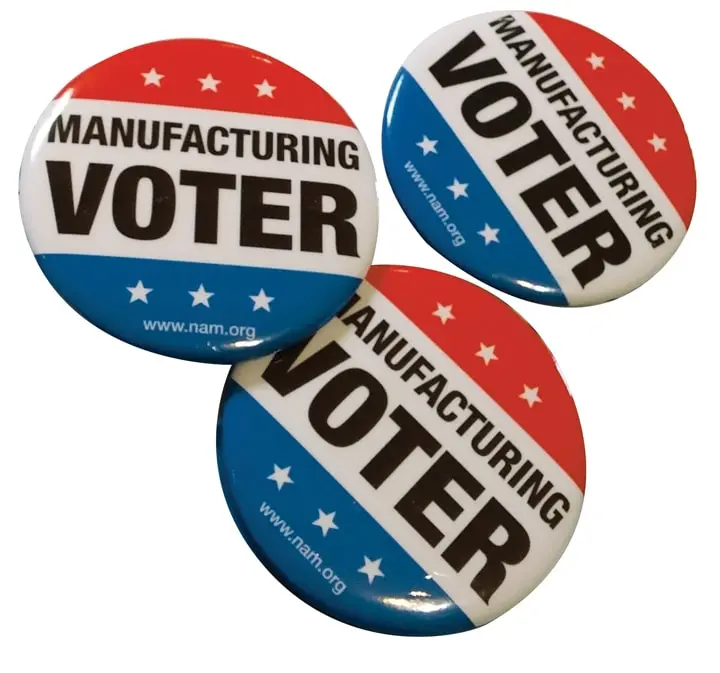
ON TAXES
Trump has touted 2017 tax cuts he signed into law as stimulating economic growth. He has attacked the idea of raising taxes while the economy recovers.
Biden said the cuts benefited the wealthy and corporations. He has pledged to reverse some of those cuts, raising the marginal tax rate on the highest income earners back to 39.6%, from 37%, while also lifting investment profit taxes. He also supports raising the national minimum wage to $15 an hour from $7.25 and expanding some tax credits for lower-income workers.
ON INFRASTRUCTURE AND GREEN INVESTMENTS
Biden wants to spend $2 trillion over four years to improve infrastructure, create zero-emissions public transportation, build sustainable homes, and create clean-energy jobs.
Trump advocates more spending on U.S. roads, bridges, and airports, too, but has signaled little appetite for making “green” investments.
According to the poll, the pro-manufacturing policies U.S. voters believe candidates should most support include: prioritizing investing in our nation’s infrastructure (seventy-nine percent), including roads, highways, bridges and other critically-needed projects; focusing on better preparing the next generation of America’s workforce (seventy-nine percent); and supporting efforts to bolster rural and agricultural economies (seventy-six percent).
The national poll also included oversamples of registered voters in manufacturing-heavy states Michigan, Ohio, Pennsylvania, Wisconsin, and Texas. The equipment manufacturing industry supports nearly 1.2 million jobs across these five states and 2.8 million across the country. At least half of registered voters in Michigan, Ohio, and Wisconsin say they either work in the manufacturing sector or know someone who does, ten percentage points higher than the national average. At the same time, one out of every four (twenty-four percent) of registered voters in Michigan and one out of every five (eighteen percent) of registered voters in Ohio say they have either lost a manufacturing job or know someone who did.
ABOUT THE POLL
These polls were conducted by Morning Consult from July 7 – 9, 2020. The national sample consisted of 2,000 registered U.S. voters, while the five additional state surveys were comprised of 300 registered voters in Michigan, Wisconsin, Pennsylvania, Ohio, and Texas – states largely recognized as important swing states heading into the 2020 elections. The interviews were conducted online, and the data were weighted to approximate a target sample of registered voters based on age, race/ethnicity, gender, educational attainment, and region. Results from the national survey have a margin of error of +/- 2%, while each of the state-level surveys have a margin of error of +/- 6%.
Manufacturing News Briefs 2020 Fall
NEWS, RULES, REGULATION AND LEGISLATION
THE MANUFACTURING ECONOMY
NY Fed Empire Manufacturing Survey: Activity Expanded at a “Solid Clip”
Business activity expanded at a solid clip in New York State, according to firms responding to the September 2020 Empire State Manufacturing Survey.
- The headline general business conditions index climbed thirteen points to 17.0.
- New orders increased modestly, and shipments grew significantly.
- Unfilled orders continued to decline.
- Inventories edged slightly lower.
- Delivery times were somewhat longer.
- Employment was again little changed this month, though the average work week picked up.
- Input prices increased at a faster pace than in August and selling prices continued to increase modestly.
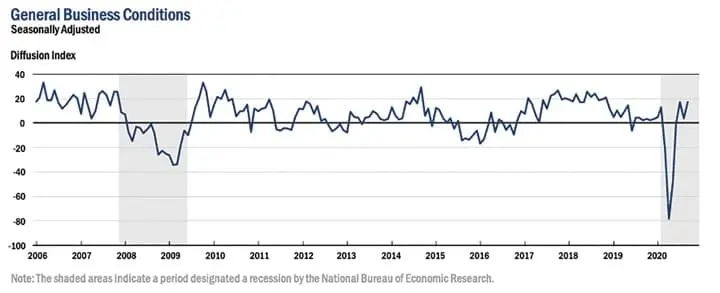
OECD: G20 Q2 GDP Declines by 6.2%
The Organization for Economic Co-operation and Development (OECD) published data on national economies for G20 countries in Quarter 2 of 2020. As a whole, the G20 economy contracted by 6.9% from Quarter 1. This contraction is an all-time record and more than 4 times what was observed during the peak of the 2009 global financial crisis. Of the G20 countries, China was the only one to report economic growth (+11.5%). Excluding China, the combined economy of the rest of the G20 contracted by 11.8%. Notably, India’s economy contracted by more than 25%, and the UK’s contacted by more than 20%. Across all OECD countries, the combined economy contracted by 10.6%.

NAM/ Industry Week Q3 Manufacturers’ Outlook Survey
Manufacturers reported a boost in optimism—up from 33.9% in Q2, the lowest reading since the first quarter of 2009. The survey also found significant use of many of the federal liquidity programs, the NAM advanced early in this pandemic to support manufacturers. The data shows:
- 72 percent of manufacturers that faced negative cash flow impacts due to COVID-19 used the Paycheck Protection Program, Main Street Lending Program or other liquidity program.
- Nearly 92 percent of manufacturers that used federal liquidity programs said those funds were helpful in keeping their business afloat, retaining workforce or meeting other necessary expenses.
- 66 percent of manufacturers are positive about their company’s outlook, a great improvement from the Q2 results. Still, the outlook remains below the historical average of 74.4%.
- 62% of manufacturers expect their firm’s revenues will not get back to pre-COVID-19 levels until 2021 or later.
ENVIRONMENT SAFETY AND HEALTH
Juggling Safety in a Circus of Roles: National Safety Survey 2020
So much can change in a year. Last year’s National Safety Survey examined the difference in titles and responsibilities safety professionals have. This year, the dynamics of health and safety within an organization have rapidly evolved since the novel coronavirus has brought illness prevention to the forefront of every conversation. The year 2020 has brought about an unprecedented set of challenges to the safety industry. The COVID-19 pandemic has required professionals to focus their efforts on illness prevention to ensure business continuity while balancing ongoing “traditional” tasks. As the pandemic puts occupational health in the spotlight, safety professionals indicate that 86% of their employers prioritize support for safety, which is unchanged year-over-year.
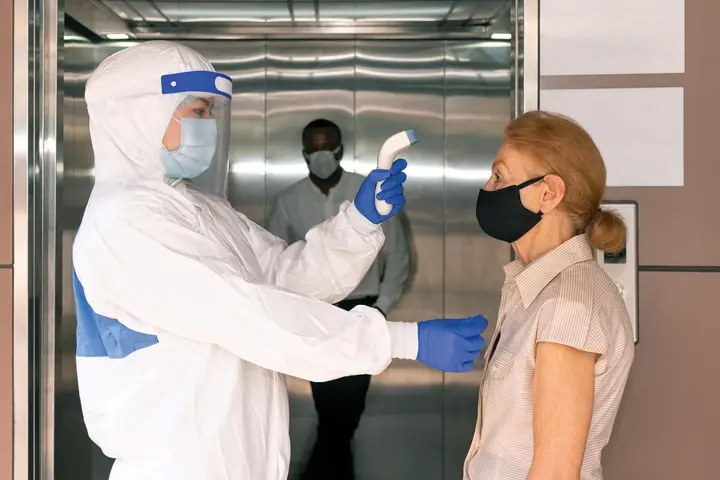
A Rise in OSHA Whistleblower Claims During COVID-19 Pandemic: USDOL Office of Inspector General
In the report, the OIG noted that the pandemic has resulted in a 30% jump in whistleblower complaints during the four-month period of February 2020 through May 2020 as compared to the same period in 2019—from approximately 3,150 complaints in 2019 to approximately 4,100 in 2020.
Of the whistleblower complaints filed from February 2020 through May 2020, approximately 1,600 (39%) were related to COVID-19, such as claims that someone was retaliated against for claiming violations of guidelines regarding social distancing or personal protective equipment.
A Pandemic is the Mother of Invention – COVID-19 Has Accelerated the Development of New Safety Technologies
As the world economy adjusts to the COVID world, organizations such as the Center for Disease Control (CDC) in the U.S. and the World Health Organization (WHO), are publishing recommendations for how to operate manufacturing and other business operations while still practicing social distancing and other aspects of workplace safety. Manufacturers across the nation and the world have stepped up to develop innovative and repurposed technologies to make workplaces safer.
Some of these new technologies include: UV Lighting, advanced thermal screenings, portable HVAC and advanced filtration options, long efficacy disinfectants, and rapid antibody and viral testing.
LABOR, EMPLOYMENT AND WORKFORCE DEVELOPMENT
Employers Likely to Face a Wave of COVID-19 Class Action Litigation
As the ongoing COVID-19 pandemic continues to drastically impact the U.S., class action lawsuits have been on the rise. Despite court closures, class action filings have increased and are expected to continue. The risk to companies of class and collective action proceedings has been amplified. Below are the key areas that have already flooded the court system as well as issues expected to drive class action litigation arising from the pandemic.
- Wage and Hour: Under the Fair Labor Standards Act (FLSA), nonexempt employees must be paid for all time worked, including overtime rate for any hours over 40 in a given work week.
- Worker Classification: Independent contractors are generally not eligible for unemployment compensation or state-mandated paid leave during the pandemic.
- Disability Accommodation and Discrimination: Class claims that relate to reopening businesses may include disability discrimination claims, retaliation claims, whistleblower claims and privacy matters relating to COVID-19 diagnoses.
- WARN Act: The federal Worker Adjustment and Retraining Notification Act (the WARN Act) requires advance notice to employees in instances of mass layoffs and qualified plant closings.
$9 Million Awarded as Part of New York’s Workforce Development Initiative
Governor Andrew M. Cuomo announced September 15th that 66 businesses, schools, and community-based organizations across the state have been awarded nearly $9 million as part of the State’s historic Workforce Development Initiative. The grants are federally funded and will support job training opportunities across the state for more than 3,600 New Yorkers adapting to the postCOVID economy.
As New York has moved forward through the reopening process, the New York State Department of Labor has been working to connect every job seeker in New York with the right job opportunity. DOL has been encouraging both businesses in need of workers, and New Yorkers in need of a job, to take advantage of their Jobs Express website.
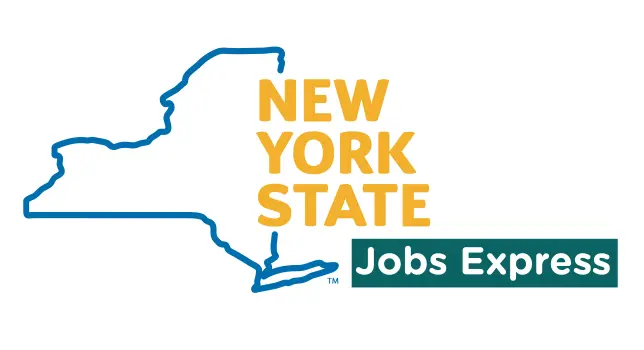
Council of Industry Jobs Board Receiving Record Number of Candidates
Since May, the Council of Industry Jobs Board has been receiving more than 1,000 applicants for the available positions with manufacturers per month. That is a more than 40% increase over the same time period in 2019.
HVMfgJobs.com was created by the Council in 2018 to be a single site for Hudson Valley Manufacturers to post their openings. Backed by a social media marketing campaign, it aimed to help manufacturers find workers for all their open positions – entry level production, sales, marketing, administration, accounting, and most importantly skilled trades such as machinist, toolmaker and maintenance mechanic.
“The pandemic, paradoxically, has exasperated the challenge of closing the skills gap. Many older, talented workers are leaving the industry and replacing them is getting more and more difficult,” said Johnnieanne Hansen, Council of Industry Vice President.
“HVMfgJobs is one tool we are using to try to close the gap.
Another one is our apprentice program.”
Savvy Employers are Investing in Opportunistic Hiring Amid the COVID-19 Pandemic
Some talent acquisition experts and HR leaders agree that with millions of new entrants into the job market, employers that are focused on recruiting will be well-positioned to fill critical roles with suddenly accessible top talent at all levels, from executives to front-line workers.
“There’s more available talent than there’s ever been,” says Elizabeth Birrell, head of insight and talent analytics at Armstrong Craven, a talent mapping and executive search firm in Manchester, England. “Millions of people will be without jobs, and millions of jobs without people. Talent teams that can be decisive and invest in high-performers have unprecedented access to people from hard-hit industries who find themselves looking for work, sometimes for the first time in years.”
Don’t Let New York’s Sick Leave Law Catch You Off Guard
New York State’s recently enacted paid sick leave law requires all private New York employers to provide their employees with paid (or unpaid) sick leave in varying amounts.
The law took effect on September 30, 2020, and employees begin accruing leave on this date, but employers are not obligated to allow employees to use accrued leave until January 1, 2021. Employers must ensure that their paid time off policies incorporate the requirements of this new law and allow employees to take all the sick leave to which they are entitled.
Employers should begin to review/update their existing sick leave policies to ensure compliance with the new law’s requirements.
OECD Report: The Economic Impacts of Learning Losses
A report from the Organization for Economic Cooperation and Development (OECD) shows that the worldwide school closures in early 2020 led to losses in learning that will not easily be made up for even if schools quickly return to their prior performance levels. These losses will have lasting economic impacts both on the affected students and on each nation unless they are effectively remediated.
While the precise learning losses are not yet known, existing research suggests that the students in grades 1-12 affected by the closures might expect some 3 percent lower income over their entire lifetimes. For nations, the lower long-term growth related to such losses might yield an average of 1.5 percent lower annual GDP for the remainder of the century. These economic losses would grow if schools are unable to re-start quickly.
The economic losses will be more deeply felt by disadvantaged students. All indications are that students whose families are less able to support out-ofschool learning will face larger learning losses than their more advantaged peers, which in turn will translate into deeper losses of lifetime earnings.
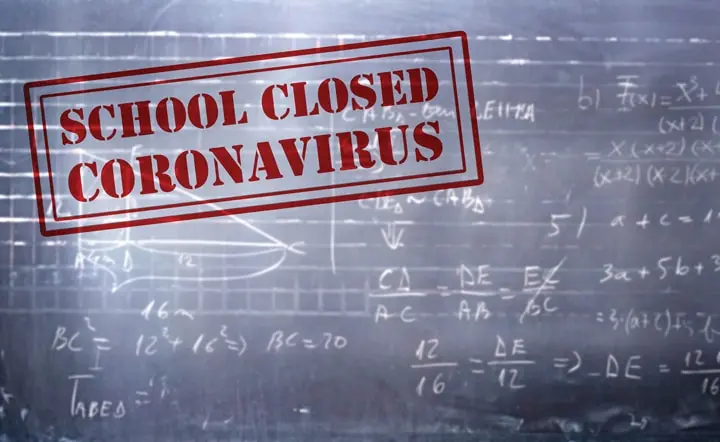
Letter From The President 2020 Fall
CELEBRATING OUR ESSENTIAL INDUSTRY
Dead Reader
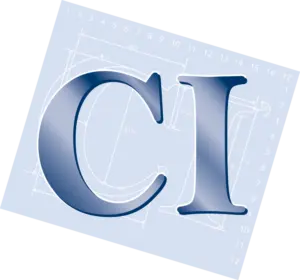
HAROLD KING
President
Council of Industry
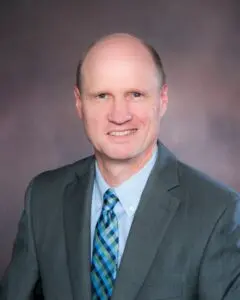
Welcome to the Fall 2020 Edition of HV Mfg, the magazine about, by and for Hudson Valley manufacturers as well as the community of people and organizations who support them. With this edition we return to both digital and print after having to shelve the print version of the Spring Edition due to the outbreak of COVID-19 and the ensuing shut down. In doing so we take one more step toward a return to the familiar while at the same time embracing what is rapidly becoming a “new normal.”
In this edition we look at both the familiar and that new normal as we feature profiles and stories that highlight the great people, products and companies that are a part of the manufacturing sector in the region, while also looking at how they managed and continue to manage – a COVID-19 world.
Our cover pays tribute to the essential manufacturing worker. The men and women of our sector who design and produce the things that make our economy run. Who make the lab equipment producing vaccines; the parts for ventilators; the components for the tablets so students can learn remotely; the food and the food production equipment that keep us fed; the parts for the defense industry that keep us safe, the packaging in which to ship it all; and so much more. The people who could not work remotely. Who, when officials said “stay home” went to the factory floor to get the essential product out the door.
We acknowledge their courage and their professionalism and thank them for what they do every day.
Our leader profile features President Containers’ Vice President of Operations, Rich Goldberg, who applied all of his 35 years’ worth of industry experience and knowledge to lead President through the pandemic. Johnnieanne Hansen introduces us to Zumtobels’ Conor McGarry, Plant Manager and a graduate of the Council of Industry’s Certificate in Manufacturing Leadership (CML) Program. Conor tells us how he got into manufacturing, what he learned from the CML, and how he and the team at Zumtobel are dealing with the pandemic. SUNY New Paltz School of Business Professor, Dr. Chih-Yang Tsai, dives into the emerging world of data analytics offering thoughts on how small manufacturers can become data driven organizations.
Dr. Michael A. Baston, President of Rockland Community College, writes about the vital role his – and all Community Colleges – can and will plan in post-pandemic, socially conscience, diversity embracing world. Taylor Dowd introduces us to PTI, a Westchester based manufacturer of packaging testing equipment. PTI’s second generation leaders used their fathers’ founding principles to help navigate the COVID crisis and they are still using them as the foundation for future growth. Sri Vilayanoor, President of Ignition Life Solutions, gives us a primer on Enterprise Risk Management (ERM) that we all wish we had read in 2019. It is, however, never too late to prepare your organization for future risks – both known and unknown.
The Fall edition also includes News Briefs and a useful guide to resources for Hudson Valley manufacturers, including our elected officials, state and county agencies, educational institutions and more. Finally, and new in this edition, we asked a few of our friends and partners to share with us a book, article or podcast they have read or listened to that has had an impact on them in their personal and/or professional lives.
We especially want to thank all the HV Mfg advertisers in this edition. These are challenging times for many organizations, including ours. Your support of manufacturing, this publication, and our association is sincerely appreciated. An index of advertisers can be found on page 54.
Sincerely,





